This article serves as an initial review of various coffee beans that are easily found in popular grocery stores.
As a newcomer to the world of coffee, my aim is not to rank the best options available for purchase, but rather to provide an overview of what to expect and share the lessons learned from the experience.
This article will be updated over time to include as many brands as possible, recognizing that it is not feasible to taste every coffee.
Specialty coffee vs blend
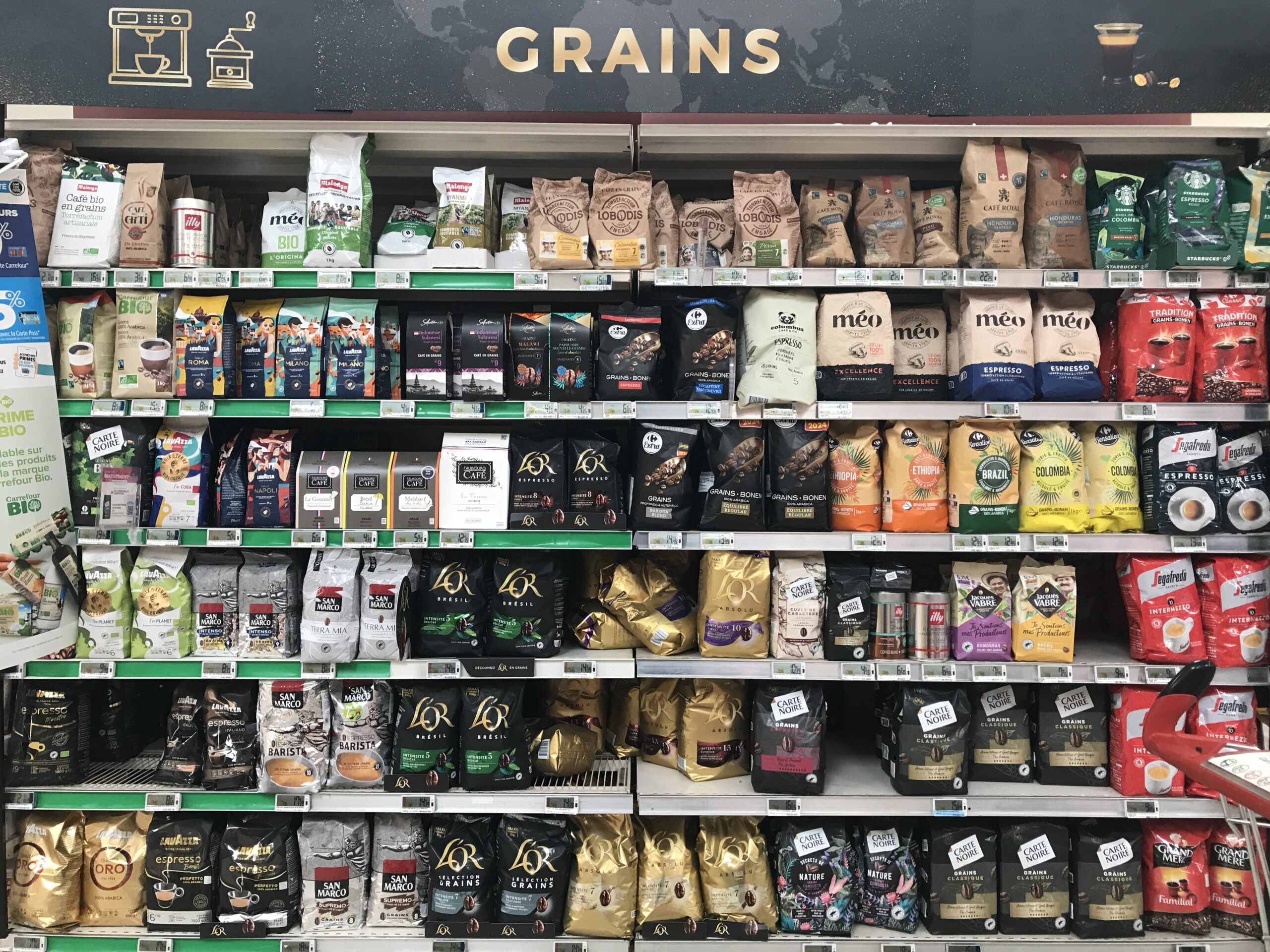
Specialty coffee
I believe this debate closely resembles the one surrounding whisky and scotch. Single malt whisky, in particular, is often seen as more prestigious and may more accurately showcase the capabilities of a single distillery.
I think this approach is the best way to assess the production quality and craftsmanship of a distillery or coffee farmer.
Blend
In the world of whisky, blends often focus more on taste experimentation and engineering. A master blender’s role is to consistently create or recreate a flavor that remains unchanged over the years.
This results in a broader range of flavors. I believe the same applies to coffee. By mixing different flavors, you can achieve a richness that surpasses what you would find in a single-origin coffee, though it may lack the precision and distinct characteristics of specialty coffee.
Which one is better ?
For me, there’s no clear-cut answer. I believe specialty coffee is excellent for discovering the unique characteristics of a region and the techniques of a specific origin.
On the other hand, blends offer more consistency and can provide a rich and enjoyable experience without having to source a very rare and expensive coffee.
Specialty coffees generally stand out for their superior quality, thanks to a rigorous selection process and careful cleaning, drying, and roasting methods.
Notes
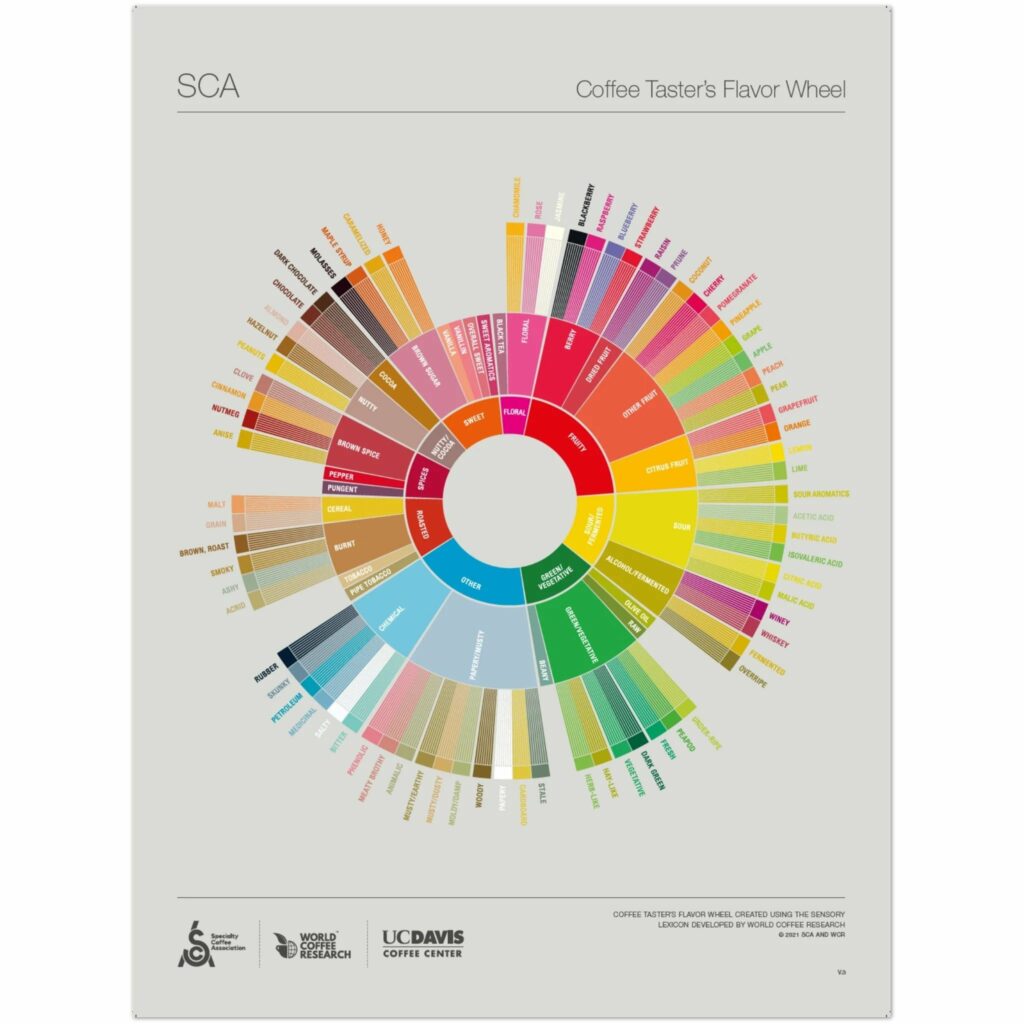
Link to the Coffee Taster’s Flavor Wheel : https://notbadcoffee.com/flavor-wheel-en/
Everyone has different tastes when it comes to food and hot beverages. It’s a highly subjective topic, and to understand my perspective, you need to know my preferences.
I typically favor bold and balanced flavors with sweet chocolate and nutty aromas. While I enjoy fruity, woody, or earthy notes in coffee, I tend to dislike bitterness and burnt flavors.
Grinder
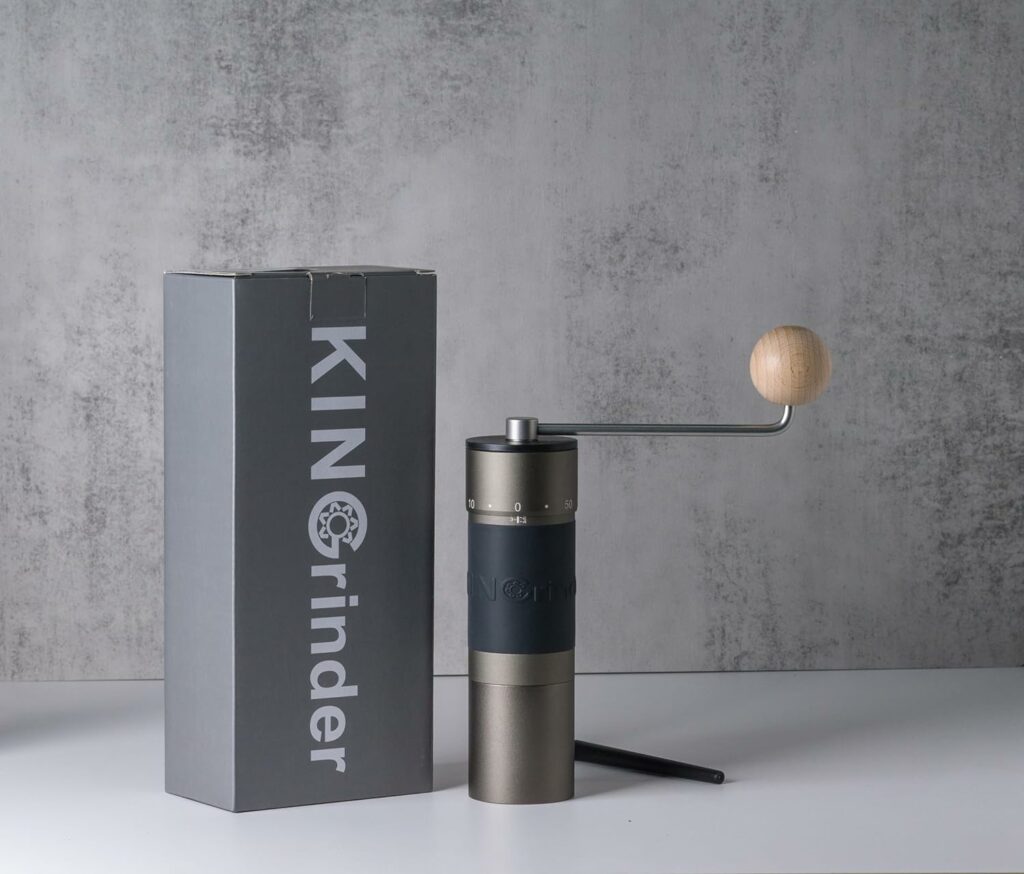
I will be using a KinGrinder K6 with the standard recommandations that are included in the manual. To make it short, 60 clicks for espresso, 100 clicks for filter coffee and 120 clicks for French press.
Classic methods of brewing
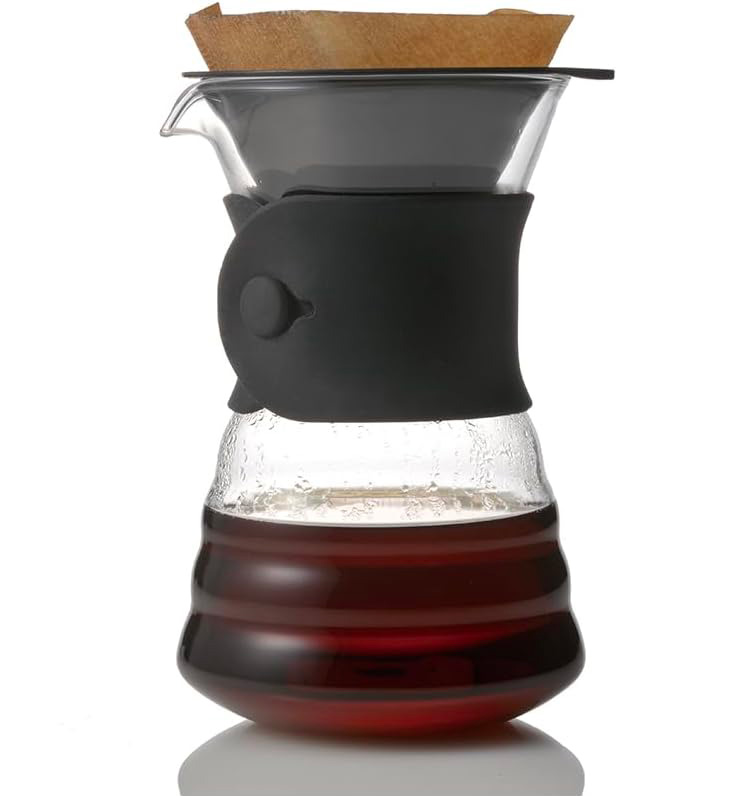
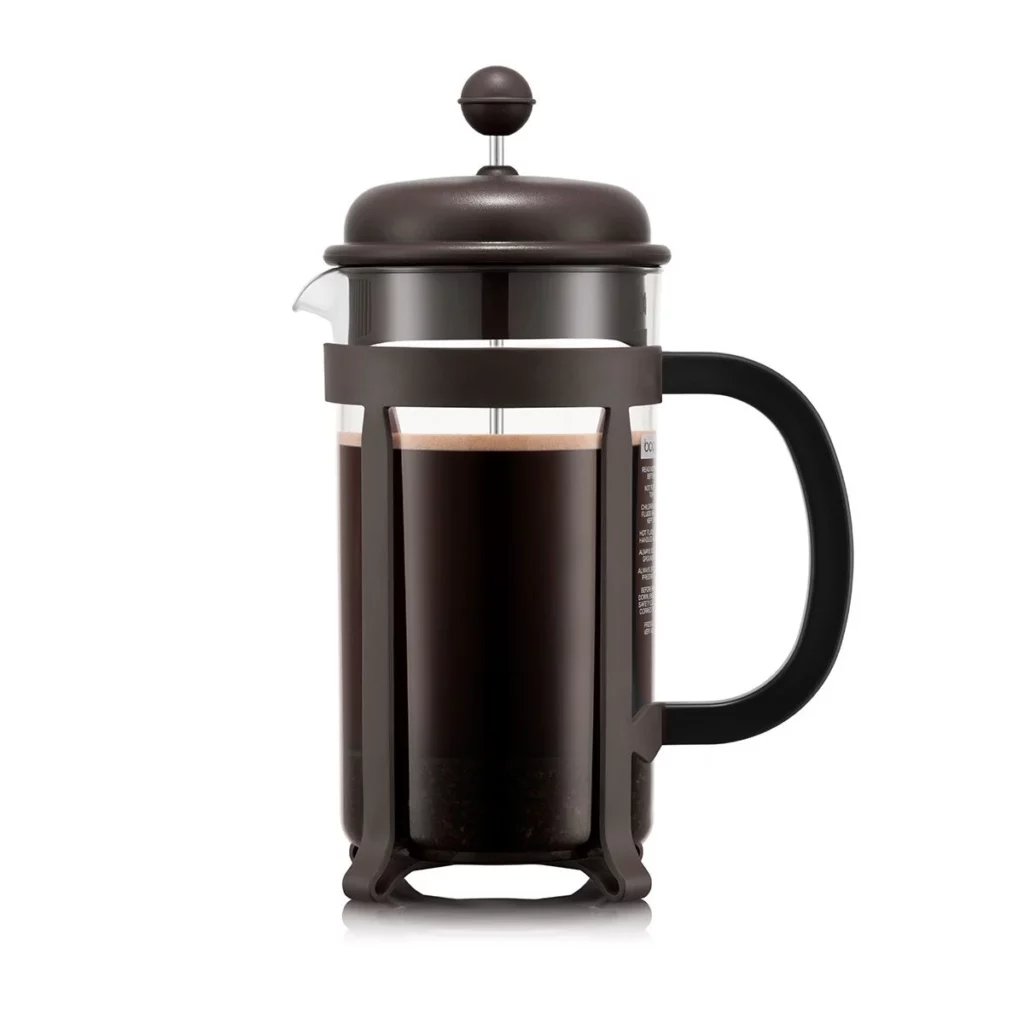
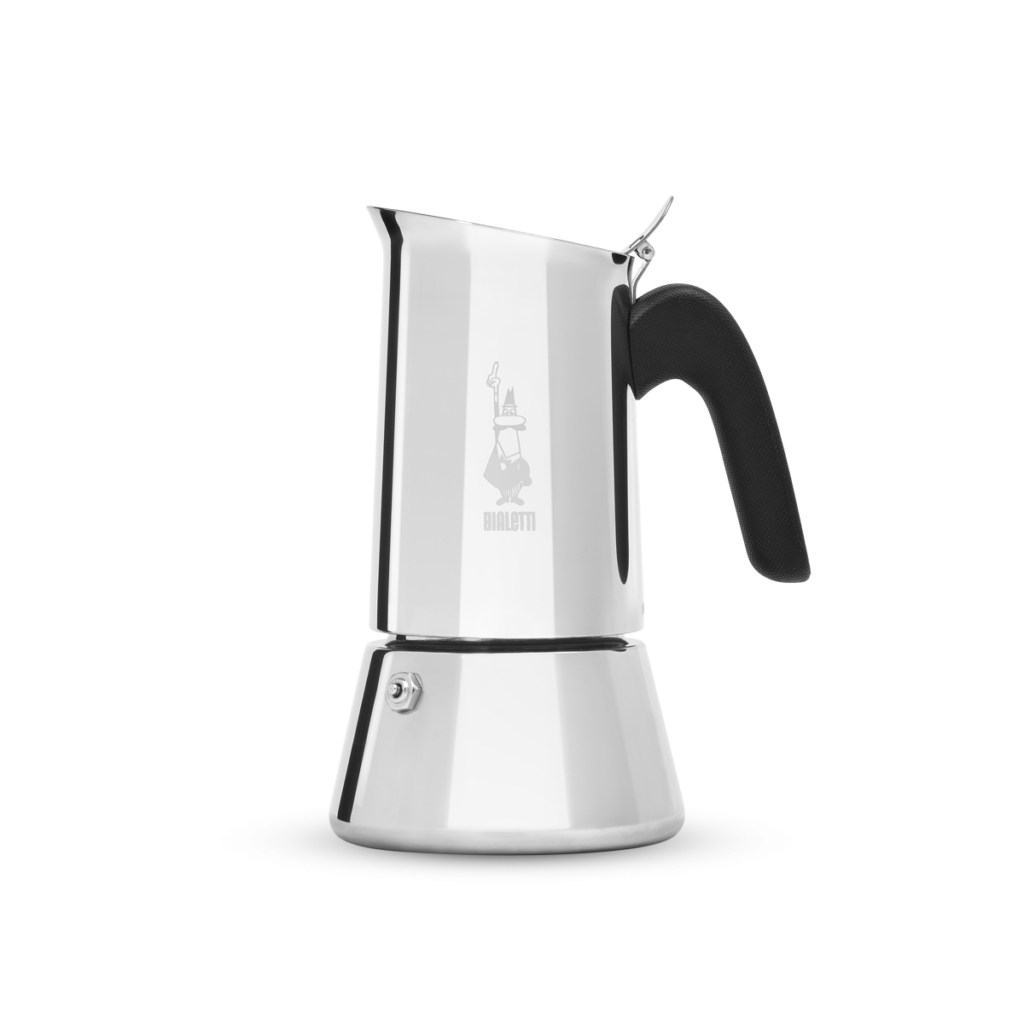
For brewing, I’ll be using a Bialetti Venus, a Hario V60 Decanter, and a French Press Bodum Java. These are affordable options that deliver great results without requiring a significant investment.
Espresso
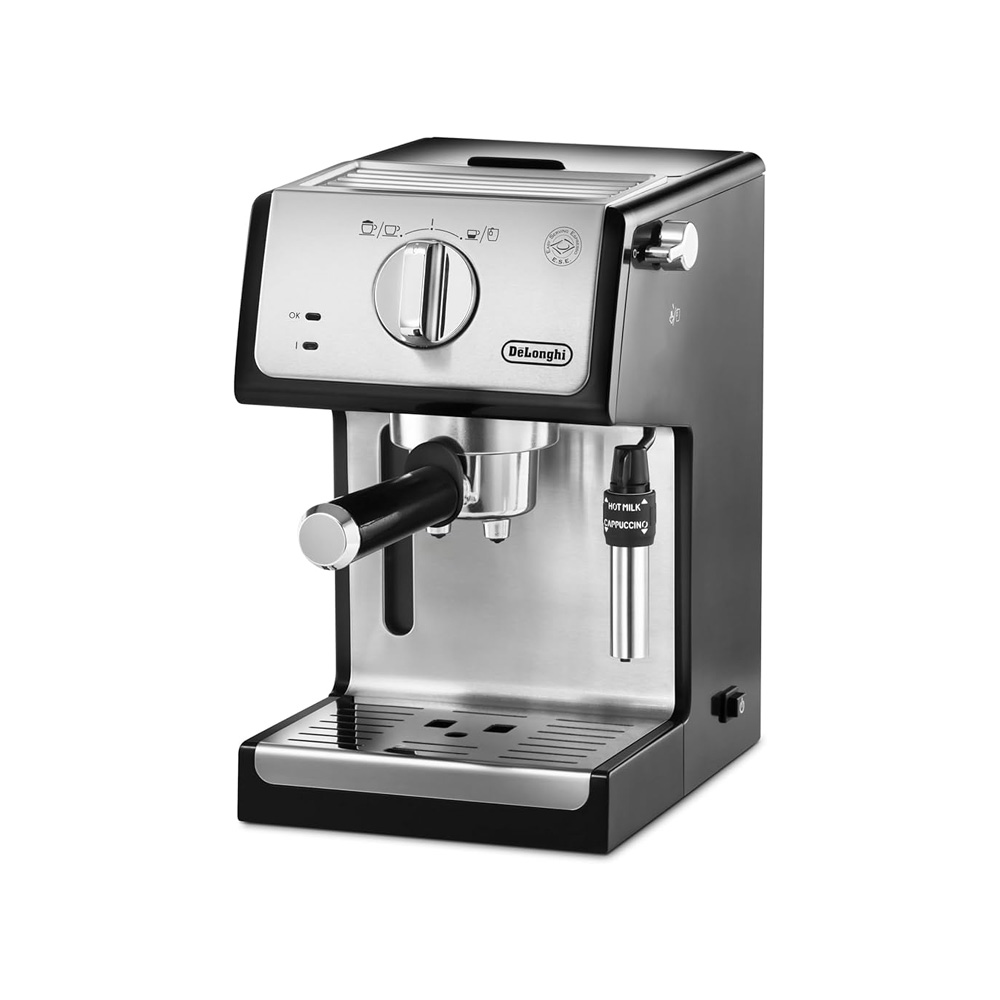
For making espresso, I’ll be using a DeLonghi ECP 35.31 paired with a Neouza bottomless and unpressurized portafilter.
Table
| Coffee Name | General Notes | Flavor Wheel |
|---|---|---|
| 1. Lavazza Oro | Balanced, Sweet, Light | Nutty/Cocoa: Chocolate, Almond; Sweet: Vanilla |
| 2. Lavazza Oro | Dark Chocolate, Caramel, Citrus | Nutty/Cocoa: Dark Chocolate; Sweet: Caramel; Sour: Citrus |
| 3. Lavazza Tales of Milano | Fruity, Spicy | Fruity: Cherry; Spicy: Brown spices |
| 4. Columbus Café & Co | Bold, Rounded, Sweet, Chocolate aroma, Nut aroma, Woody | Nutty/Cocoa: Chocolate, Almond; Sweet: Vanilla; Roasted: Malt; Papery/Musty: Woody |
| 5. Faubourg Café Le Gourmet | Balanced, Cereal, no acidity | Roasted: Cereal |
| 6. L’Or Brésil | Spicy, Light acidity, Fermented taste, Balanced, Bold | Nutty/Cocoa: Dark Chocolate, Peanuts; Sweet: Sweet Aromas; Sour: Sour fermented |
| 7. Carrefour Selection Malawi | Acidity, Citrus fruit | Fruity: Lemon |
| 8. Carrefour Selection Guatemala | Floral, Papery, Spicy | Floral: Jasmine; Spicy: Anise; Papery/Musty: Papery |
| 9. Faubourg Café Malabar des Indes | Bold, Little acidity, Pungent, Cereal, Spice | Roasted: Cereal; Spices: Cinnamon; Other: Musty |
| 10. Carrefour Selection Indonésie | Balanced, Little acidity, Woody, Earthy | Other: Woody; Fruity: Other fruit |
| 11. Faubourg Café Brésil Bahia | Lime, Earthy | Fruit: Lime; Papery/Musty: Earthy |
| 12. Lavazza Tales of Roma | Low acidity, slight bitterness, dark chocolate | Roasted: Cereal; Nutty/Cocoa: Dark Chocolate |
| 13. Auchan Pérou Bio | Medium acidity, Floral, Delicate | Fruity: Orange; Floral: Jasmine |
| 14. Malongo Italian Style | Low bitterness, No acidity, Low sweetness, Nutty flavors | Nutty/Cocoa: Chocolate |
| 15. Carte Noir Grain Classique | Spicy, Bitter, Acidity, Sweetness | Fruity: Lemon; Burnt: Ashy; Papery/Musty: Woody; Sweet: Sweet Aromatics; Nutty/Cocoa: Dark Chocolate |
| 16. Lavazza Tales of Napoli | Bitter, Caramel, Smoky | Sweet: Molasses; Roasted: Ashy |
| 17. Illy Classico Grain | Spicy, Cinnamon, Tobacco | Spicy: Cinnamon; Roasted: Pipe Tobacco |
| 18. Starbucks Single-Origin Colombia | Burnt, Nuts | Burnt: Ashy; Nutty: Hazelnuts |
| 19. Lidl Bellarom Zambie AAA Single Origin | Spicy, Balanced, Little acidity, Strong body, Fruity | Fruity: Pear; Burnt: Smokey |
| 20. Lidl Bellarom Colombia Supremo | Fruity, Low bitterness, Great balance | Fruity: Orange; Nutty/Cocoa: Almond; Floral: Black Tea |
| 21. Lidl Bellarom Ethiopie Limu Single Origin | Bitter, Little acidity, Cereals, Earthy | Roasted: Ashy; Spice: Pungent; Other: Musty/Earthy |
| Bonus MR. VIET Cà Phê Chon | Oaky, Vanilla, Light Caramel, Orange peel zest | Sweet: Vanilla; Brown Sugar: Caramelized; Papery/Musty: Woody; Fruity: Orange |
Some of the coffee we’ve tried
1. Lavazza Oro
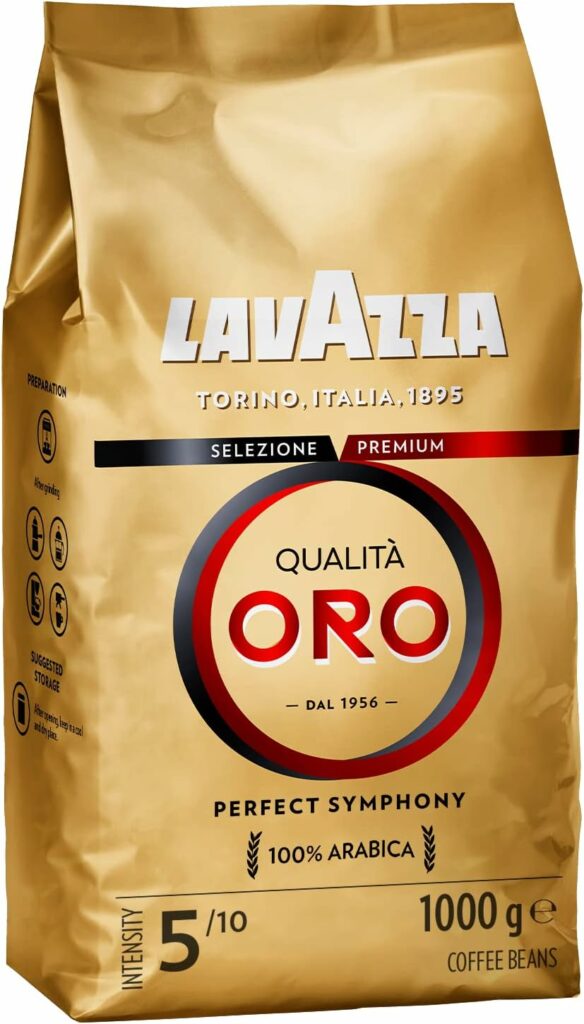
Lavazza is arguably the most renowned brand for Italian coffee, even surpassing the combined popularity of Kimbo and Illy.
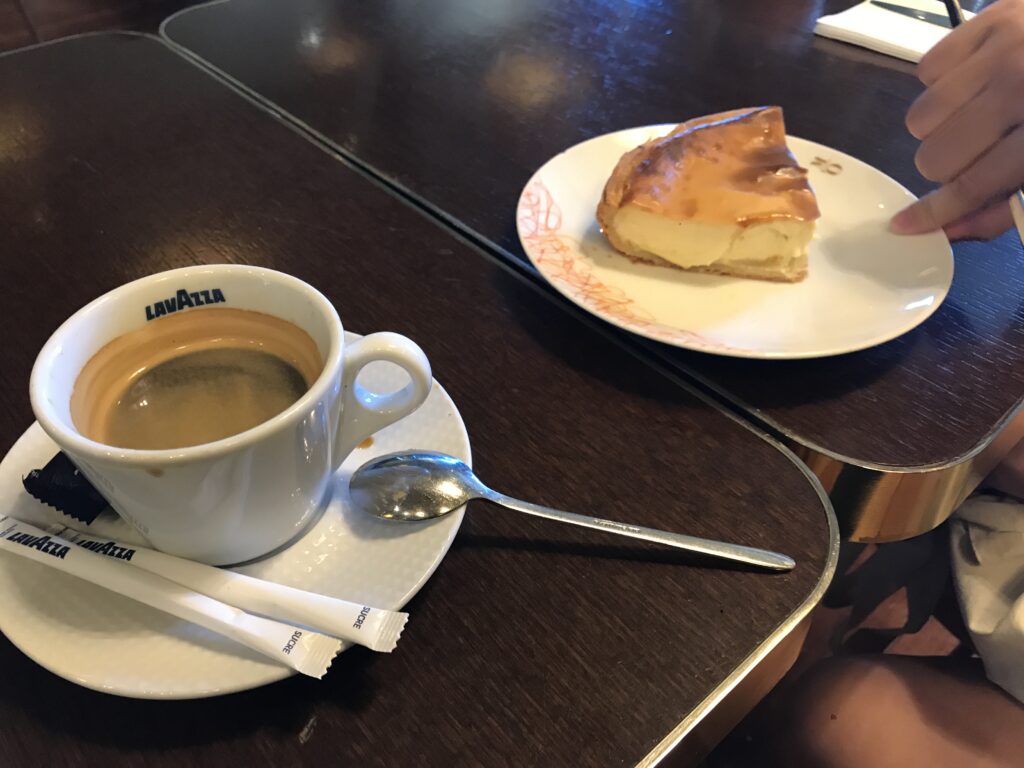
One of the finest espressos I’ve ever had was at the iconic café in Le Musée d’Orsay, where the coffee was sweet and balanced, with the cup bearing the Lavazza name.
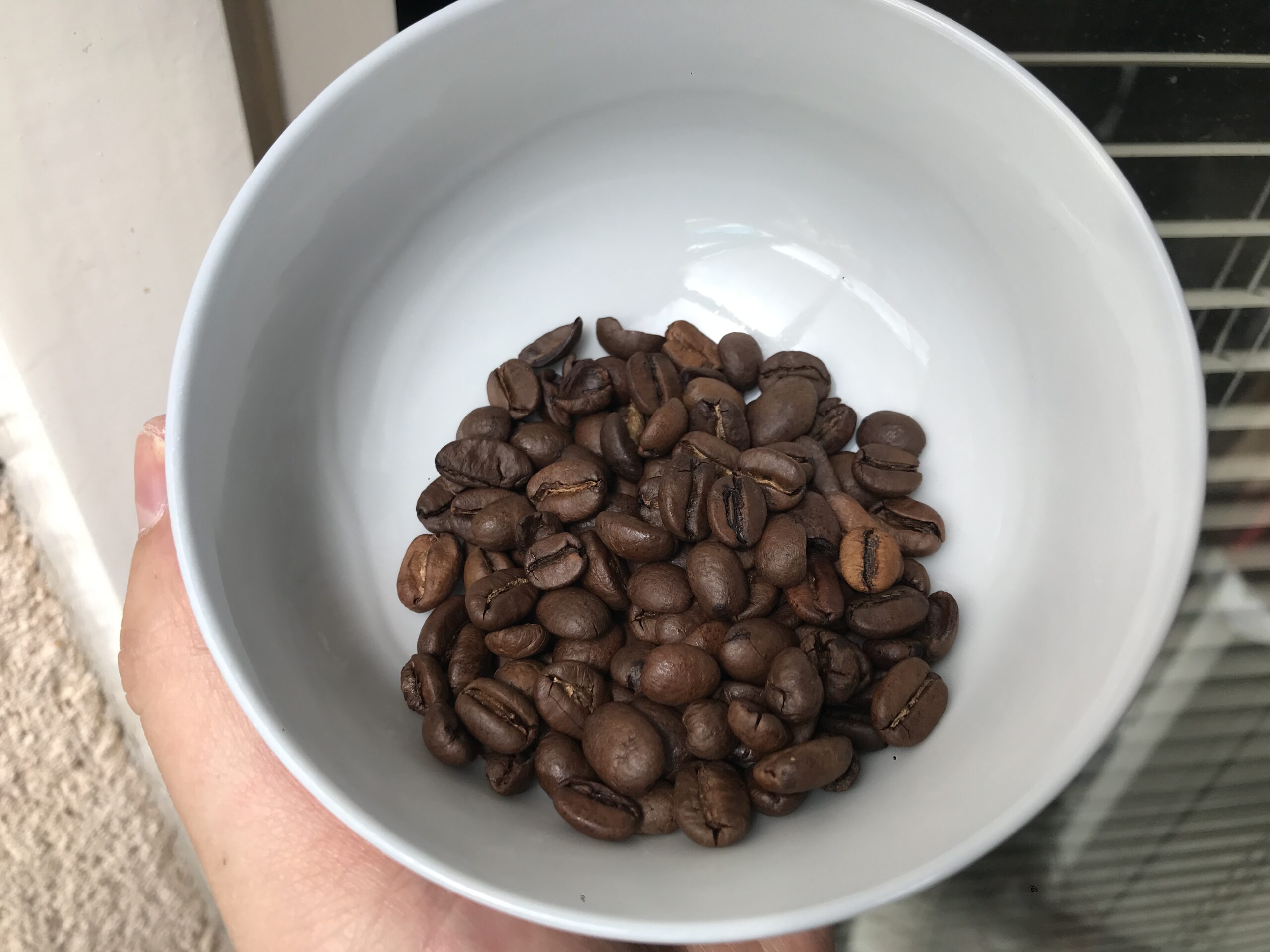
I suspected they were using freshly ground Lavazza beans, and when I explored the different options—Super Crema, Crema e Aroma—I found something very similar in taste with Lavazza Oro.
Origins :
100% Arabica from 5 different South American countries
General notes :
- Balanced
- Sweet
- Light
Coffee Taster’s Flavor Wheel
- Nutty / Cocoa
- Cocoa
- Chocolate
- Nutty
- Almond
- Cocoa
- Sweet
- Vanilla
When using a Moka Pot
This is the most balanced coffee I’ve tried so far, closely resembling the one I had at the Musée d’Orsay café. It has a slightly less sweetness and complexity, likely due to the difference in brewing method, as it wasn’t made with an espresso machine.
When using an Hario V60
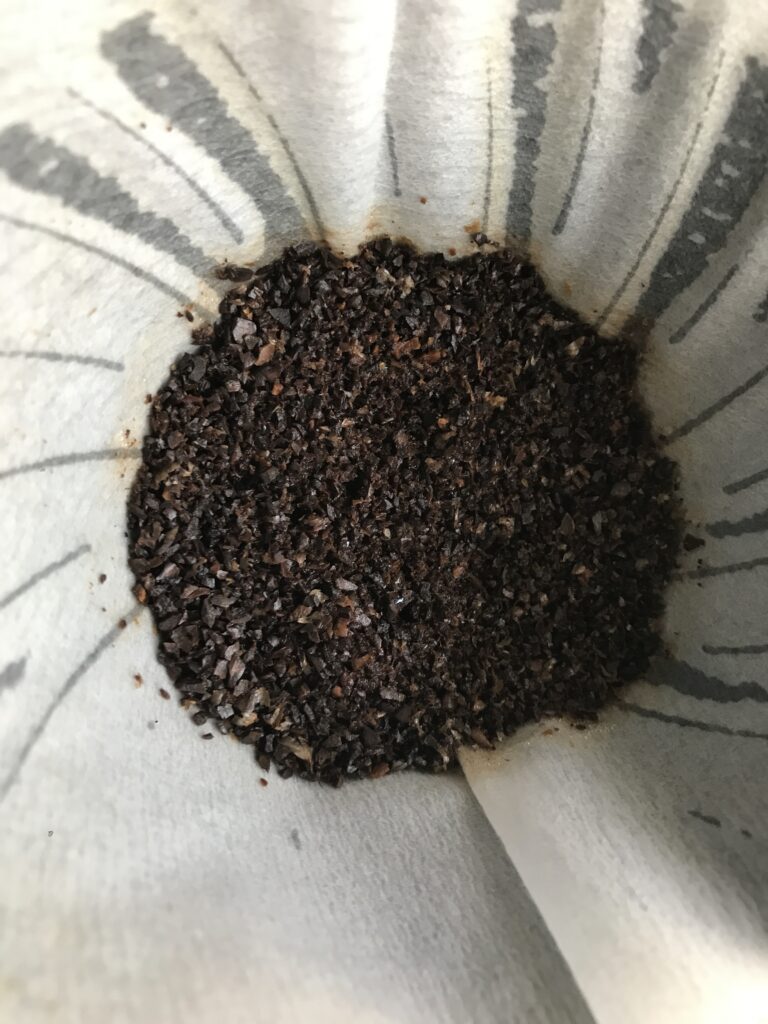
When brewed with our reliable Hario Decanter, this coffee maintains a well-balanced flavor and surprisingly gains some body.
However, we still think it shines best when prepared as an espresso or with a Moka Pot. Using a filter, on the other hand, might result in a somewhat muted taste, as no distinctive notes really stand out.
When using a French Press
When brewed with a French Press, this coffee maintains its perfect balance while gaining a slight increase in acidity. It might honestly be one of the best all-around coffees, particularly with this brewing method.
However, I still prefer using a Moka Pot, or perhaps an espresso machine, as it truly brings out the bold flavors.
Using an espresso machine
Brewing these coffee beans with an espresso machine results in a well-balanced cup, similar to Lavazza Espresso but with milder flavors and less acidity. It’s overall smoother and easier to drink.
I still need to try it with a fresh bag, as waiting a few months can sometimes diminish the flavor compounds.
2. Lavazza Espresso Italiano
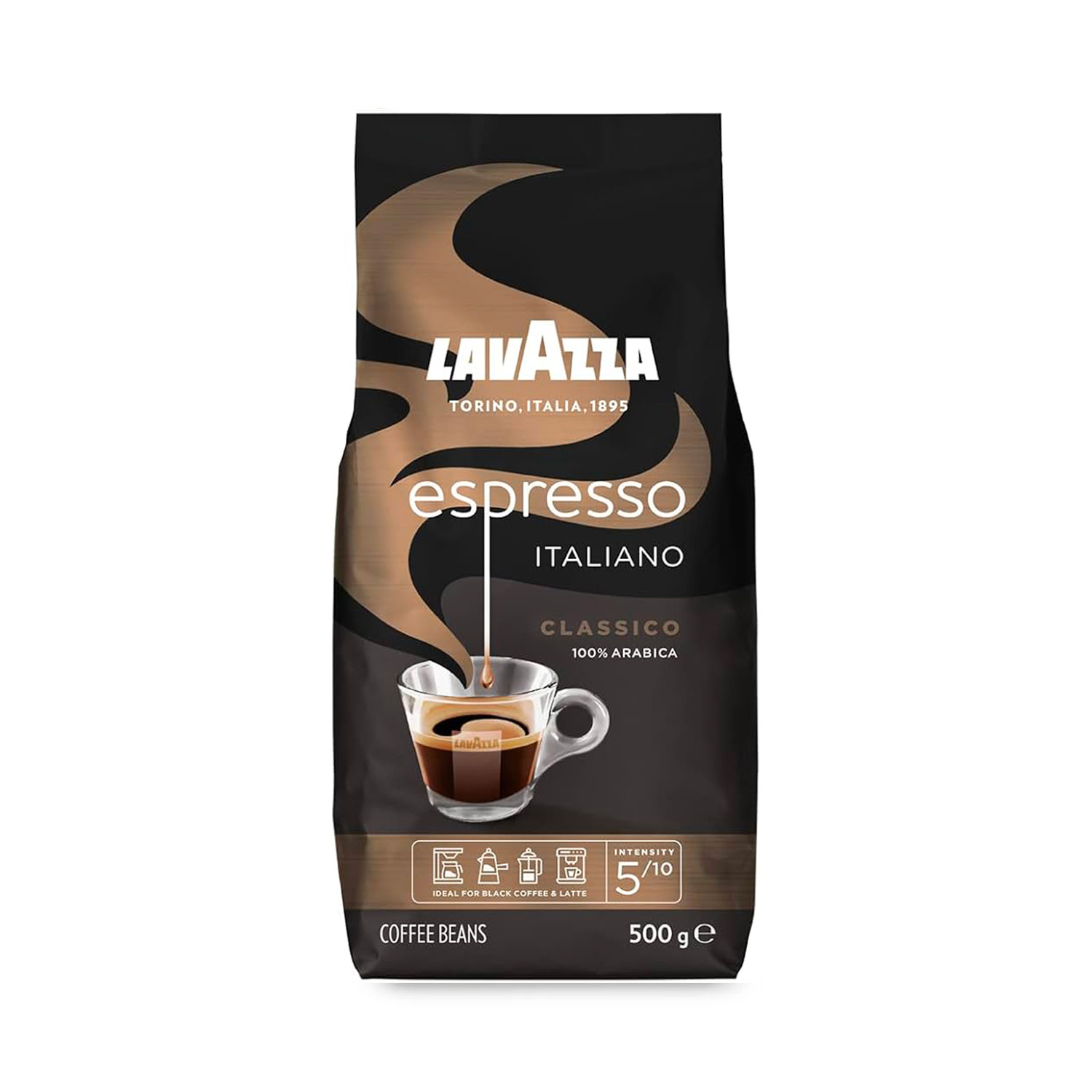
I picked up this Lavazza coffee on a whim after investing in an espresso machine. Since this was the first coffee I tried for homemade espresso, keep in mind that the espresso brewing method significantly amplifies the flavors.
In a way, espresso feels like the coffee equivalent of an oil extraction. This particular coffee has a perfect bitterness—bold without any burnt notes—balanced dark chocolate with a hint of acidity and a rich sweetness, almost caramel-like.
General notes :
- Dark chocolate
- Caramel
- Citrus fruit
Coffee Taster’s Flavor Wheel
- Nutty / Cocoa
- Cocoa
- Dark chocolate
- Cocoa
- Sweet
- Caramel
- Sour/Fermented
- Sour
- Citric Acid
- Sour
Using an espresso machine
Brewing this coffee with an espresso machine intensifies its flavor, making it feel almost like biting into the skin of a fruit. It’s bold and intensely flavorful without any bitterness.
It carries a natural sweetness, rich dark chocolate notes, and a strong yet pleasantly bright acidity. Prepared as an espresso, this is by far my favorite way to enjoy it.
3. Lavazza Tales of Milano
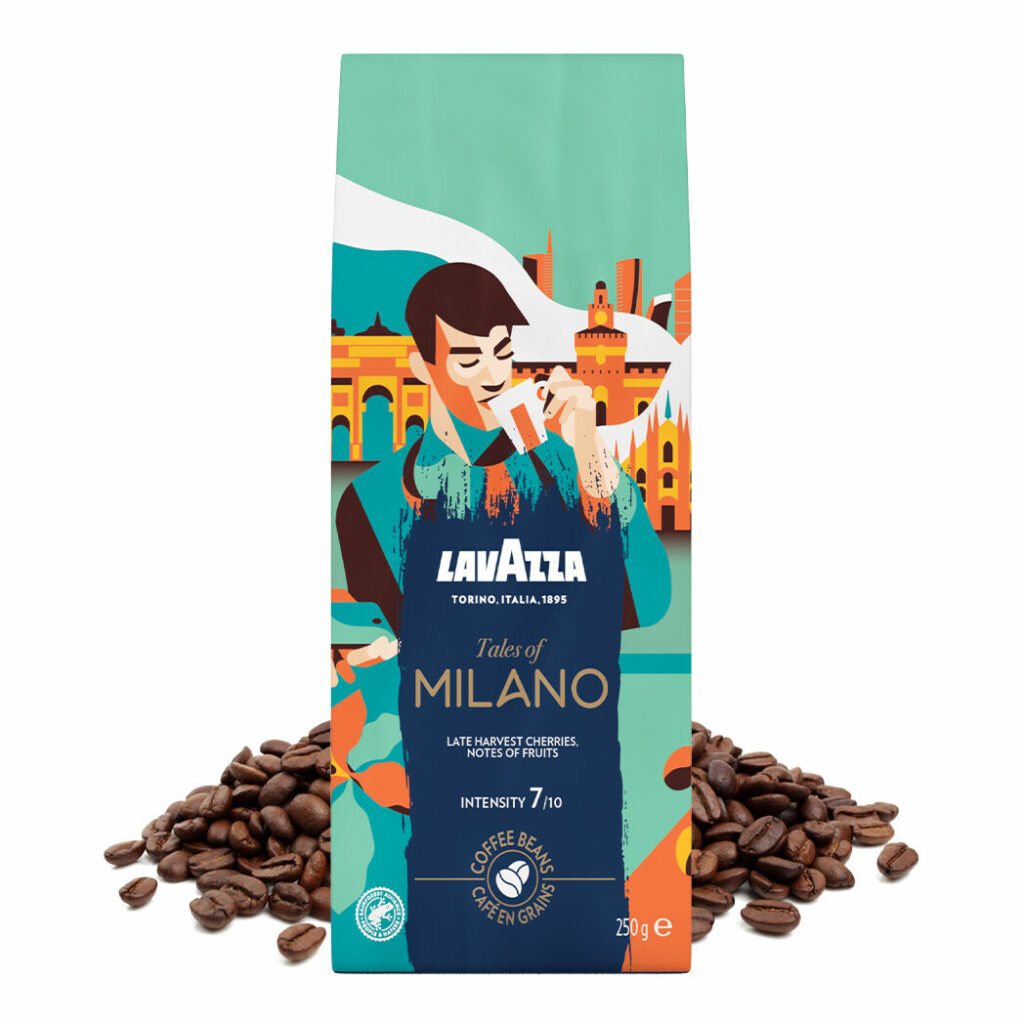
Lavazza Tales of Milano is another original blend from Lavazza, capturing the essence of Milanese culture. The packaging suggests a mellow intensity with subtle notes of cherries and fruit—a rare combination, and intriguing enough to make me want to try it.
What I love about these small Lavazza coffee bean bags is that they’re perfect for sampling—no need to commit to a full 500g pack if it turns out you’re not a fan. This coffee is made from 100% Arabica beans, medium roasted, and offers a wonderful aroma.
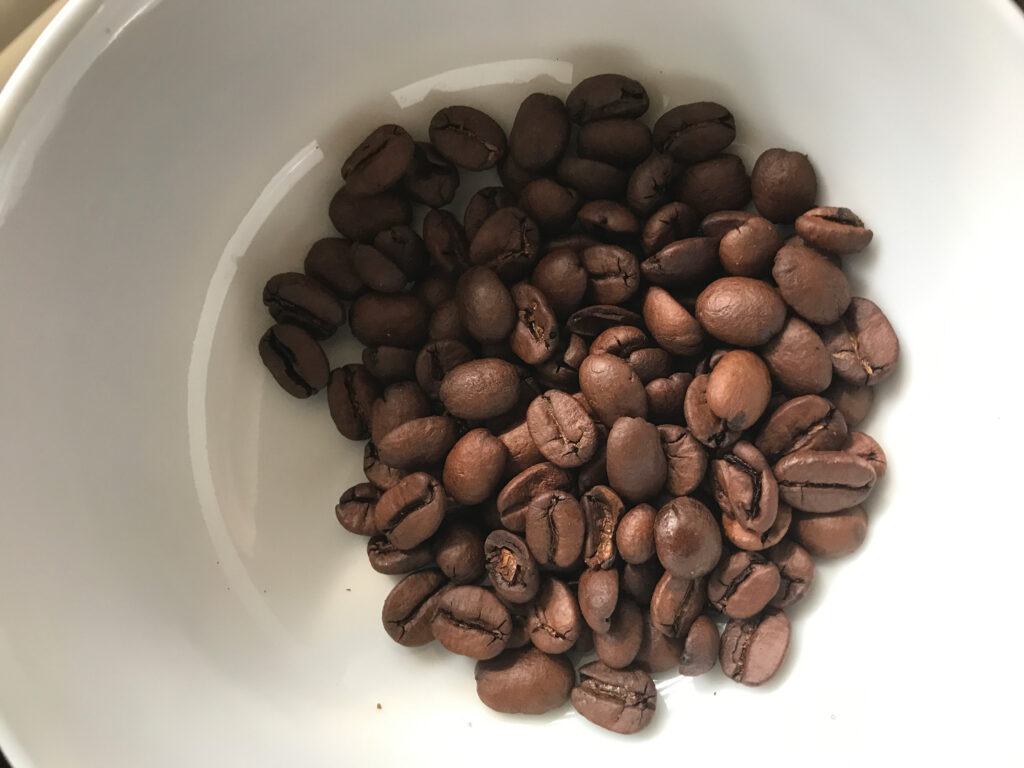
General notes :
- Fruity
- Spicy
Coffee Taster’s Flavor Wheel
- Fruity
- Other fruit
- Cherry
- Other fruit
- Spices
- Brown spice
Using an espresso machine
When using an espresso machine, this coffee benefits from a slightly coarser grind than darker roasts. On my KINGGrinder K6, around 29 to 30 clicks seems to work well.
In the cup, it’s impressively well-balanced—much like the other top Lavazza coffees—but with a brighter, fruitier profile. You’ll notice hints of red fruit and a subtle touch of spice, adding a pleasant complexity to the experience.
I’ll need to give this one another try, as it might actually be the best coffee I’ve had from this list. For now, I’m placing it at number 3, at least until I’ve had a few more tasting sessions to form a clearer opinion.
4. Columbus Café & Co
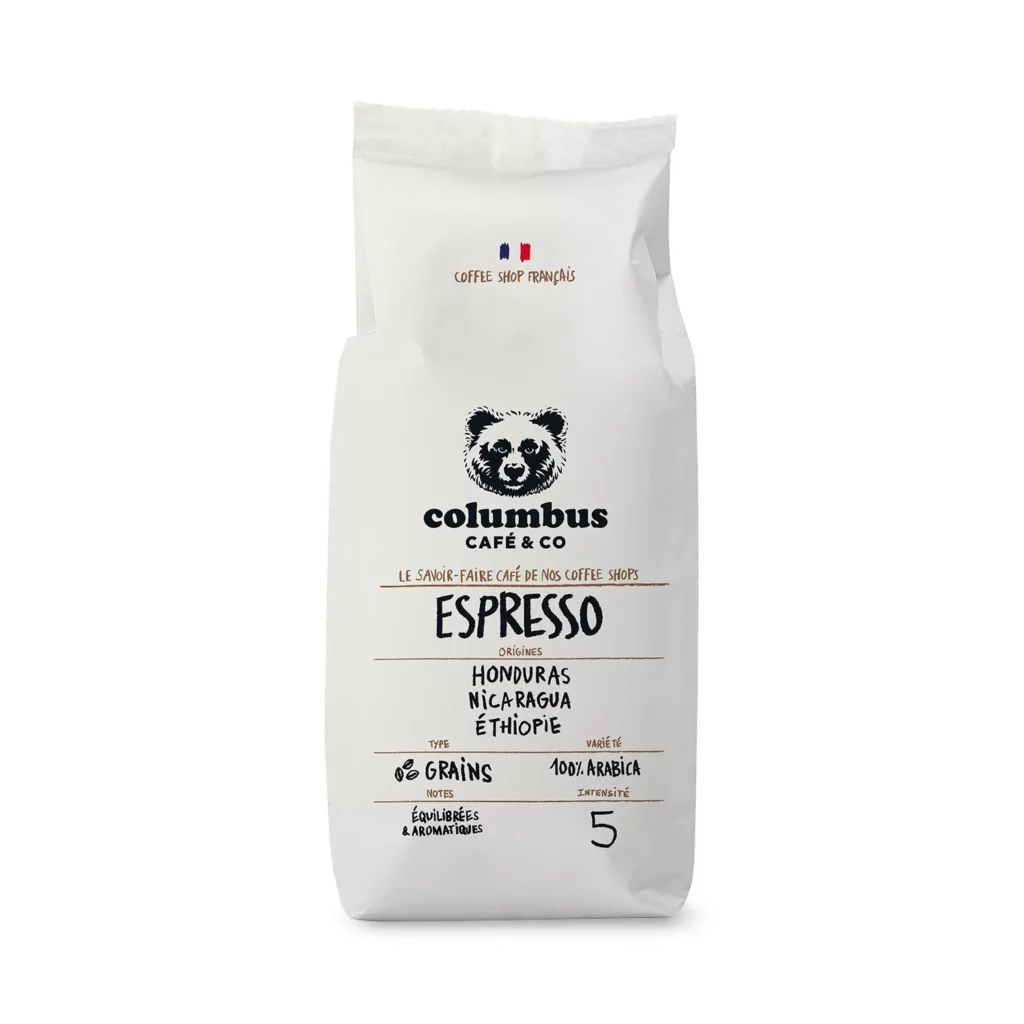
Origins :
- Honduras
- Nicaragua
- Ethiopie
This is the first bag of fresh coffee beans I’ve bought and tried after buying a manual KINGrinder K6. I’ve been to Columbus Café before and their expresso was very interesting. Purchasing directly from a coffee shop is a better option if you want freshly roasted beans, as they won’t sit on shelves as long. The bag also wasn’t puffy, indicating the beans haven’t had much time to degas.
This Coffee is a different blend and is in my opinion perhaps better than the one prepared in the coffee shop. You can clearly taste the distinctive woody and earthy notes of the Ethiopian coffee beans, which add more body and richness compared to Lavazza Oro.
General notes :
- Bold
- Rounded
- Sweet
- Chocolate aroma
- Nut aroma
- Woody
Coffee Taster’s Flavor Wheel
- Nutty / Cocoa
- Cocoa
- Chocolate
- Nutty
- Almond
- Cocoa
- Sweet
- Vanilla
- Roasted
- Cereal
- Malt
- Cereal
- Papery / Musty
- Woody
When using a Moka Pot
This remains one of my favorite coffee to date, although it’s challenging to brew perfectly with a moka pot. It can easily end up either over-extracted and bitter or under-extracted and acidic.
When using an Hario V60
Using an Hario V60 dramatically changes this coffee; the acidity becomes more pronounced, the bitterness disappears, and the floral aromas are revealed. Experimenting with the parameters and observing the results is genuinely enjoyable and straightforward.
Using an Espresso Machine
When using an espresso machine, this coffee exhibits more bitterness. The main issue, I believe, is that I only tested these beans with a machine after 10 months, by which time the compounds and flavors had changed significantly from when I first purchased the bag.
I still find this coffee less flavorful than the two Lavazza options mentioned earlier. It lacks the same complexity, particularly the acidity present in Lavazza Espresso Italiano. However, since it’s a darker roast, extracting a shot is easier.
5. Faubourg Café Le Gourmet
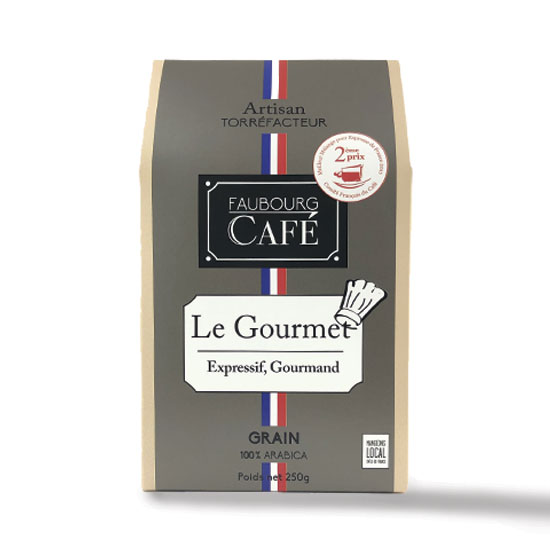
After trying Malabar des Indes, we really enjoyed the Faubourg Café brand, which we believe offers excellent value for money. It stands a notch above mainstream options, though its taste may not appeal to everyone.
Le Gourmet won second place in a competition, piquing our interest in tasting what is considered a top-tier coffee. True to French roasting traditions, it is well-balanced with little to no acidity. It brews perfectly in an espresso machine, likely due to its freshness compared to other options—something also reflected in its DLUOC.
General notes :
- Balanced
- Cereal
- Little to no acidity
Coffee Taster’s Flavor Wheel
- Roasted
- Cereal
- Malt
- Cereal
Using an Espresso Machine
This coffee truly shines when brewed with an espresso machine, having earned second place for espresso in the competition. It might be the smoothest brewing coffee among all the beans I’ve tried, but that could simply be due to its freshness, as it’s the most recent one I’ve purchased.
This coffee doesn’t produce as much crema as Malongo, for example, but it delivers a perfectly balanced cup. It might be one of the most well-rounded coffees I’ve tried, with subtle, almost floral notes that I can’t quite pinpoint.
6. L’Or Brésil
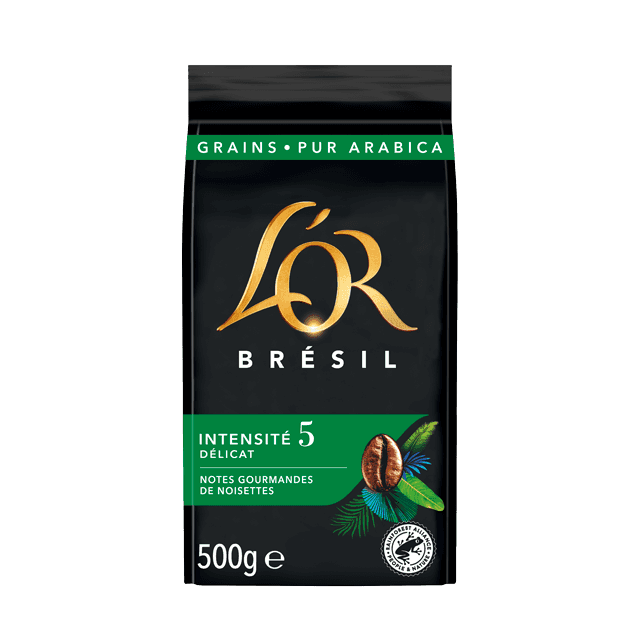
This was my first experience with Brazilian coffee, and I have to say that the beans had a very different aroma right out of the box than what I’m used to. They had an almost fermented parsley scent, which I found intriguing.
General notes :
- Spicy
- Light acidity
- Fermented taste
- Balance
- Bold
Coffee Taster’s Flavor Wheel
- Nutty / Cocoa
- Cocoa
- Dark Chocolate
- Nutty
- Peanuts
- Cocoa
- Sweet
- Sweet Aromas
- Sour
- Sour fermented
Using a Moka Pot
I think this coffee has a lot of personality and balance. I can see why it could be a daily favorite for espresso or moka pot enthusiasts. It also has a distinctive fermented taste that is quite enjoyable.
Using an Hario V60
When using a Hario V60, the coffee turns out much cleaner, with more distinct flavors. It results in a brew that is notably low in acidity and bitterness.
Using a French Press
The coffee gains body and balance, making it quite easy to enjoy a fuller cup compared to the V60. It’s honestly one of the most balanced coffees I’ve tried with this technique. Although it’s not as clear as with a filter, it provides a very pleasant experience.
Using an Espresso Machine
An espresso machine enhances the boldness of this coffee in your cup. I find it well-balanced and enjoyable, though it lacks the complexity of blends like Lavazza Espresso Italiano. Additionally, tasting it after the bag had been open for several months wasn’t ideal.
7. Carrefour selection Malawi
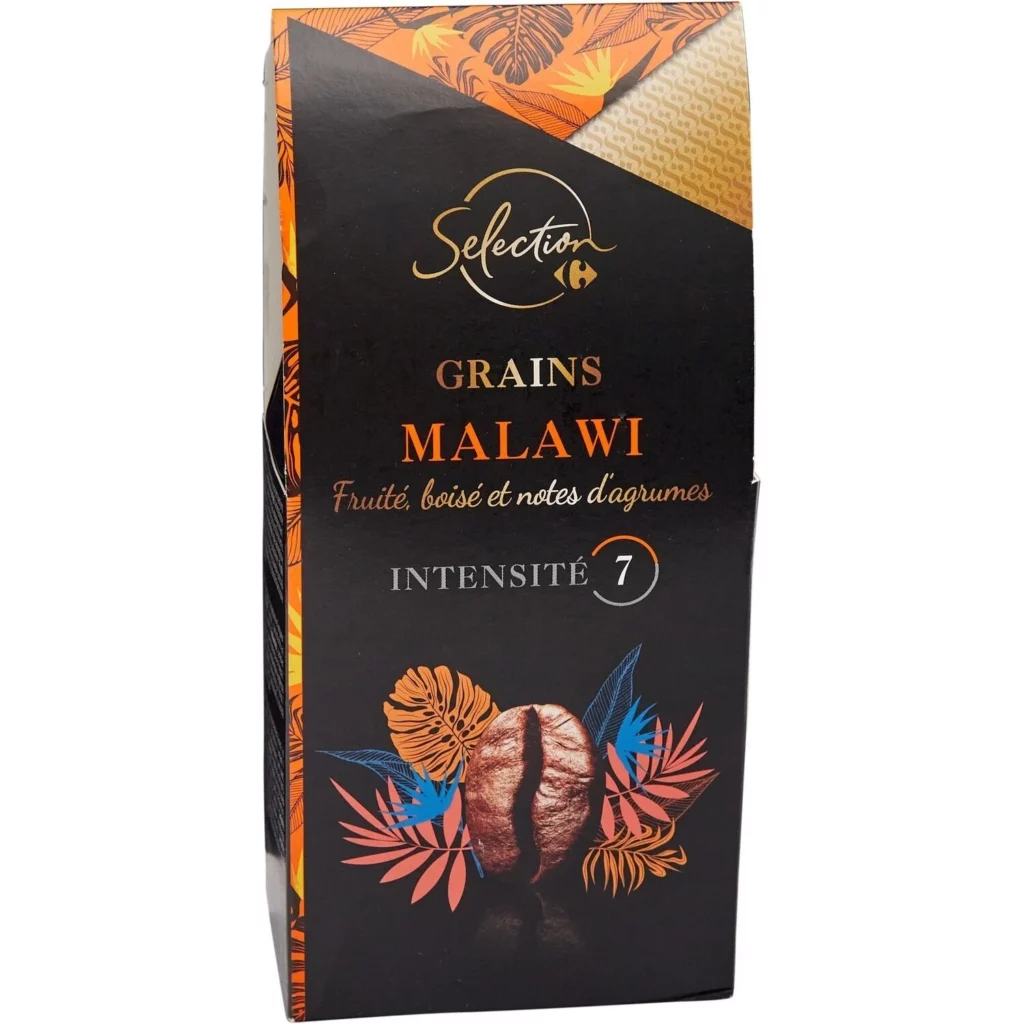
Aside from the Vietnamese Kopi Luwak, this is by far the most unique coffee in this selection. It comes from Malawi, a neighboring country of Zambia in Africa, yet its taste is completely different.
This coffee likely has the least bitterness of all, giving it a unique flavor that’s quite different from what you’d typically expect from coffee.
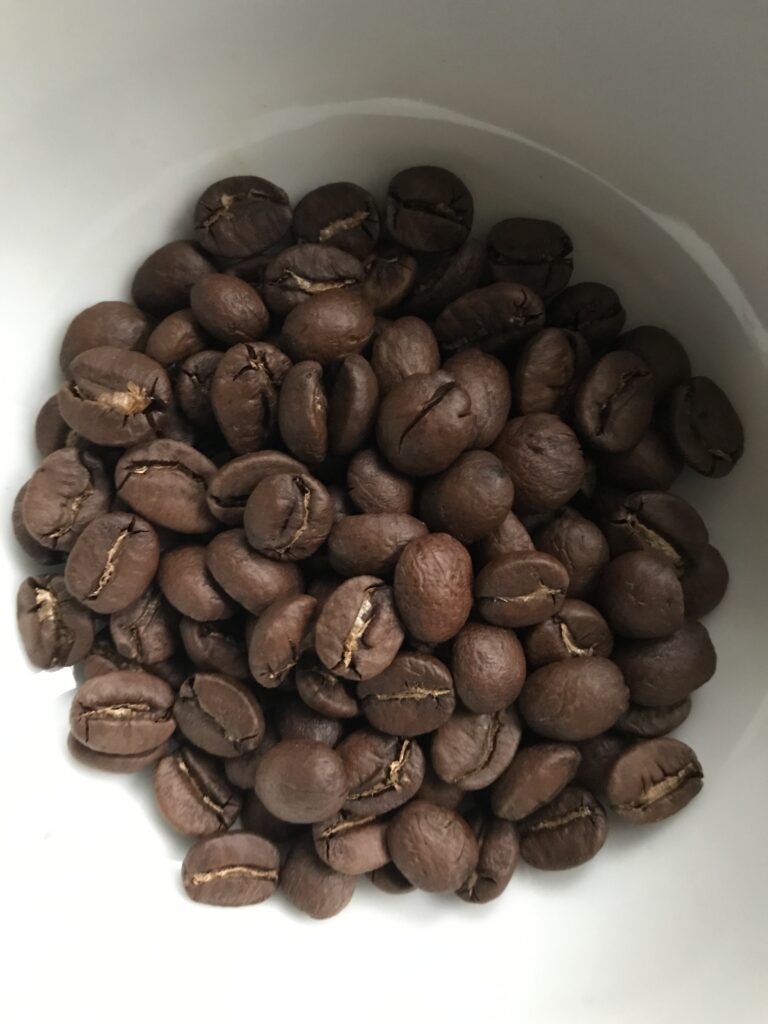
The packaging highlights fruity, woody, and citrus flavors in these coffee beans, which seems accurate, though the woody notes are quite subtle.
As you can see, the coffee beans aren’t heavily roasted, as they still have wrinkles on the surface—an indication of a medium to light roast.
General notes :
- Acidity
- Citrus fruit
Coffee Taster’s Flavor Wheel
- Fruity
- Citrus fruit
- Lemon
- Citrus fruit
When using a Moka Pot
With the first sip of this coffee brewed in a Moka, you’ll notice the complete absence of bitterness, giving it a somewhat watery taste with citrus notes.
While the coffee flavor is still there, it’s very mild. The woody notes can easily be interpreted as orange or lemon peel, as the lack of bitterness means there’s no smoky or burnt aftertaste.
It’s honestly a big departure from everything I’ve tried before and I am glad that I had the opportunity to experience such a contrast.
When using an Hario V60
When brewed with a Moka pot, this coffee already tends to feel a bit watery, lacking a strong body and bitterness. Using a filter drip method will further emphasize the wateriness, diluting its fruity aroma. I believe this coffee would shine more as an espresso, given that it’s not particularly intense.
It’s still enjoyable with a V60, but this method doesn’t allow it to reach its full potential. The fruity notes tend to be less pronounced.
When using an French Press
When using a French Press, this coffee is enjoyable, though not as brilliant as when brewed with a Moka Pot. In fact, I would even say that the Guatemala Coffee from Carrefour’s selection tastes better when prepared using this method.
It’s still an improvement over the V60, perhaps, but ultimately, a stronger extraction and bolder coffee will be more appreciated with these beans.
When using an Espresso Machine
I anticipated a sour espresso, but instead, it was remarkably balanced with fruity notes. I had always associated espresso with cacao and sweet flavors, but this coffee changed my perspective. It’s a refined brew that excels in everything from pour-over to espresso.
8. Carrefour selection Guatemala
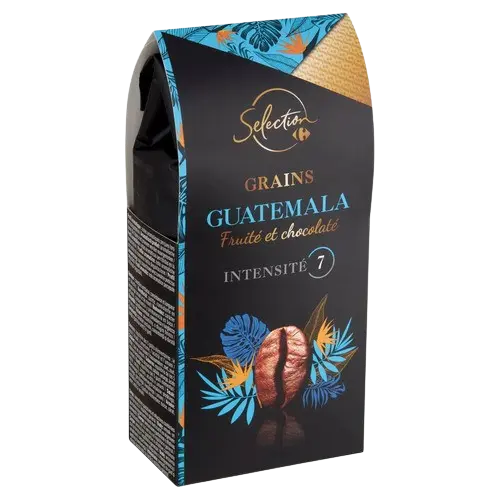
I’ve always believed that fruity and acidic notes in coffee were the complete opposite of chocolaty flavors, like black and white. So, I was surprised to come across a coffee that combined both, which is why I felt compelled to experiment with it. In my experience, cacao notes tend to stand out more in dark roasts, which diminish the acidity.
Interestingly, it seems this combination is still possible. Though, to be fair, these supposedly chocolaty notes align more with woody and spicy flavors on my palate.
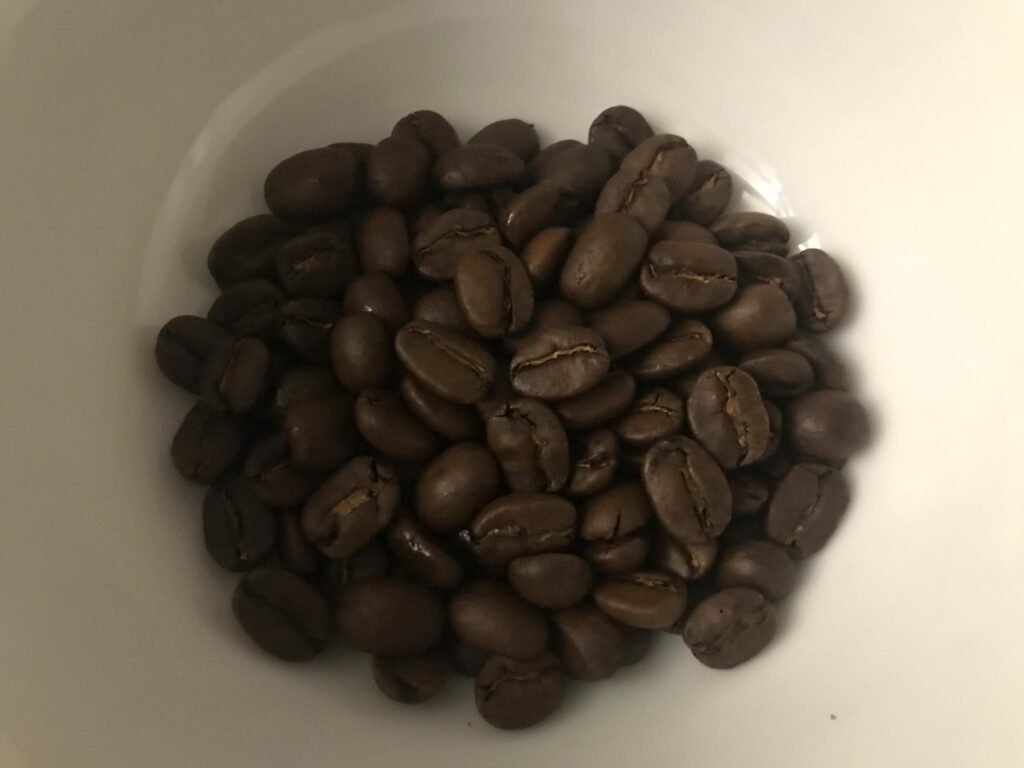
The beans appear to be of good quality and size, with a medium roast. This photo was taken under artificial light on a winter morning, which explains the darker color.
I wouldn’t describe this coffee as particularly acidic; I’d say it leans more toward floral notes.
General notes :
- Floral
- Papery
- Spicy
Coffee Taster’s Flavor Wheel
- Floral
- Jasmine
- Spicy
- Brown spice
- Anise
- Brown spice
- Papery / Musty
- Papery
When using a Moka Pot
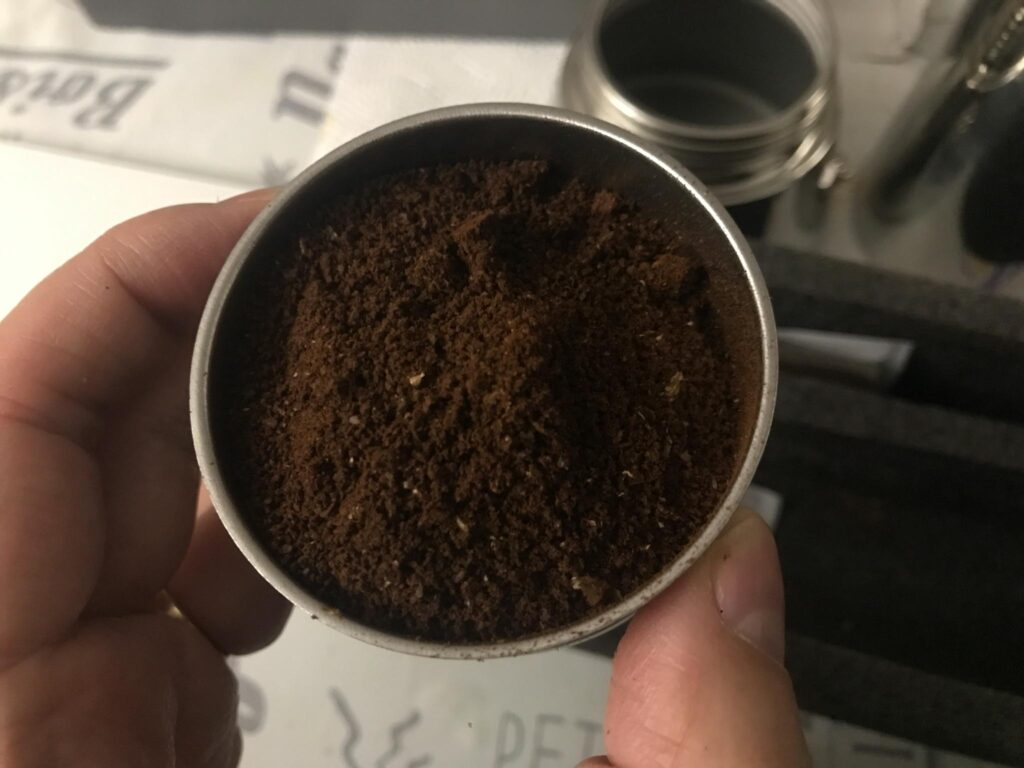
When using a Moka Pot, the ground beans smell exactly like they taste—floral, slightly papery, with a hint of spice.
I find this coffee quite interesting, though not as distinctive as Carrefour’s Malawi selection. It’s still a very pleasant and well-balanced experience.
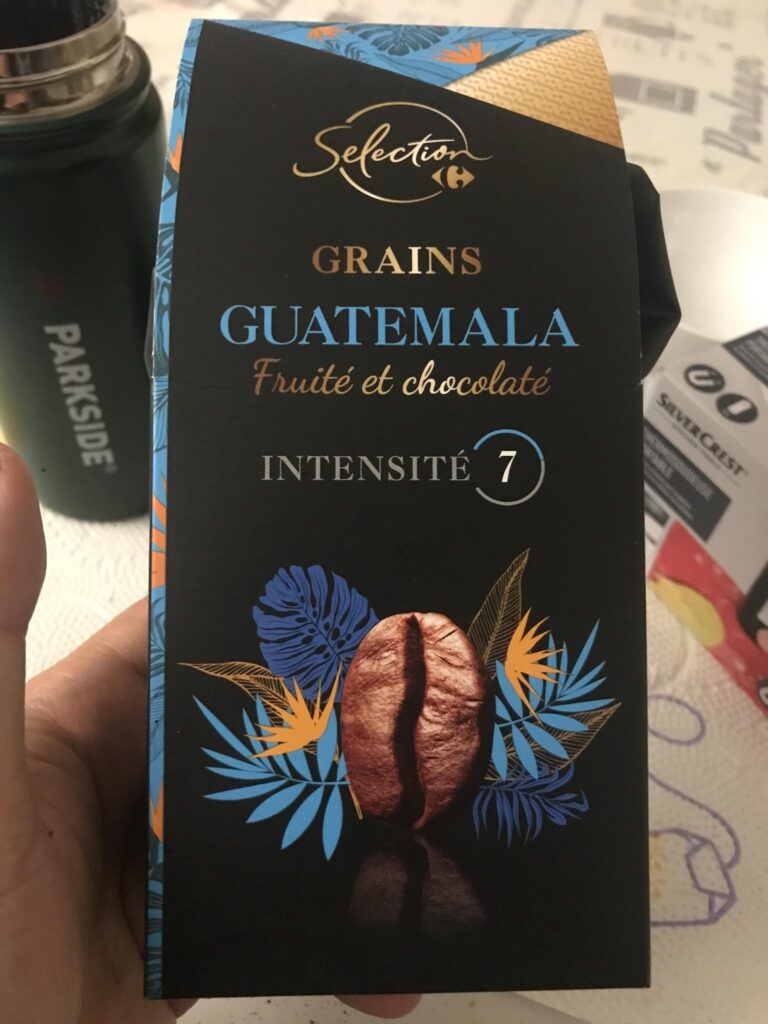
The papery notes are the most prominent, but this coffee is surprisingly complex and original enough to make it an interesting choice for a Moka pot. Other brewing methods might help balance out the papery flavors.
When using an Hario V60
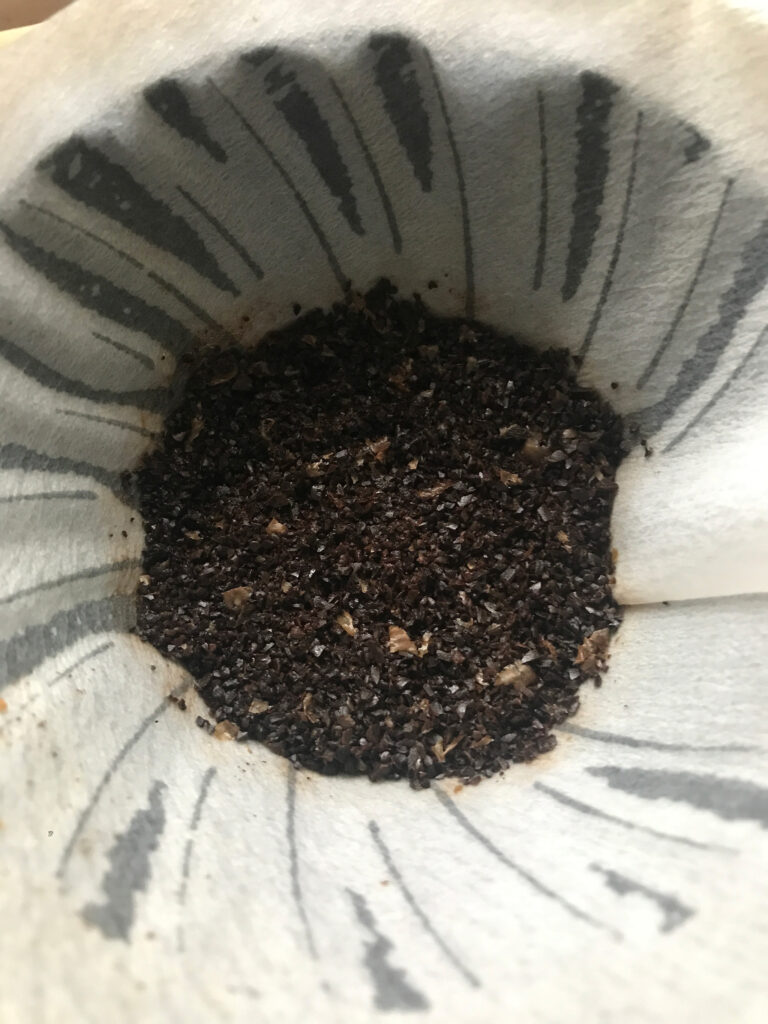
Brewing with a Hario V60 brings out the fruitiness of this coffee, which still has a hint of bitterness—though so subtle it’s hardly noticeable. The taste leans more towards cardboard or woody notes rather than a burnt flavor.
I’m not sure I would describe this coffee as chocolaty with this brewing method, as the sweetness and cocoa-like flavors are greatly diminished. Using a Moka pot definitely brings out more interesting flavors, though the V60 offers a more balanced profile especially with the spicy notes.
When using a French press
Using a French press, this coffee is exceptionally flavorful. The floral and pungent notes become more pronounced, giving it a unique and enjoyable character. While the bitterness is slightly more noticeable than with a V60, it still remains quite low.
This method of brewing may be one of my favorites for coffee. It’s worth noting that if you have a bland coffee the day before, your palate will likely appreciate the subtle nuances even more.
When using an espresso machine
This coffee isn’t the ideal choice for an espresso. While it has some character, it doesn’t quite align with the traditional Italian espresso profile. Its flavor doesn’t stand out with this brewing method, as the concentrated extraction makes it less balanced and emphasizes the bitterness.
9. Faubourg café Malabar des Indes
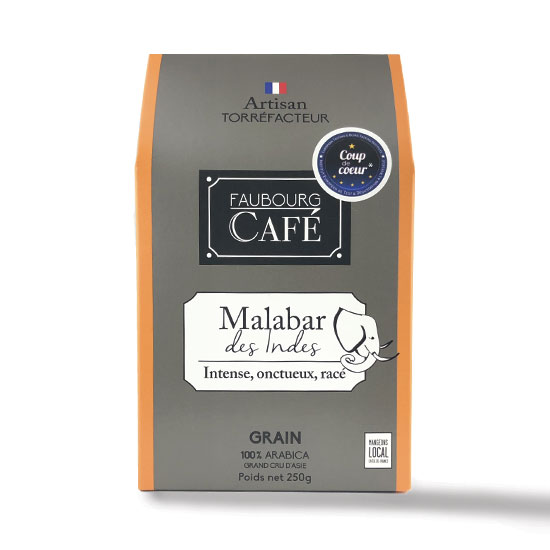
I’ve always been intrigued by Faubourg Café, a French artisan coffee roaster offering a curated selection of coffee beans in small packages, conveniently available in supermarkets.
The brand exudes a sense of French artistry and quality, reminiscent of the refinement associated with brands like Labeyrie.
I’ve chosen to try coffee from a destination unfamiliar to my palate—an exotic place like India. Coffee from India isn’t something you hear about often, which is precisely what piqued my curiosity.
Interestingly, this coffee isn’t heavily roasted, yet its packaging offers a bold and striking description—which, while accurate, remains pleasantly inviting. I can definitely detect notes of cereal, accompanied by a pleasant hint of pungency and caramel. The acidity is remarkably mild.
General notes :
- Bold
- Little acidity
- Pungent
- Cereal
- Spice
Coffee Taster’s Flavor Wheel
- Roasted
- Cereal
- Spices
- Brown spices
- Cinnamon
- Brown spices
- Other
- Papery / Musty
- Musty
- Papery / Musty
When using a Moka Pot
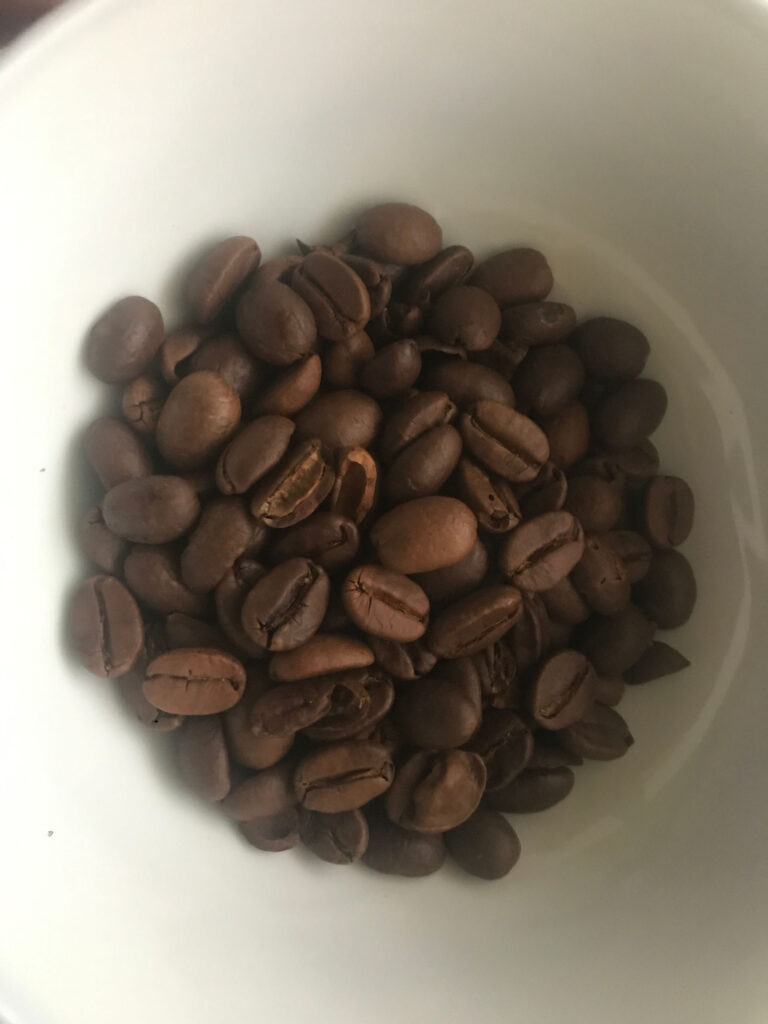
This coffee has an incredibly rich aroma, which becomes even more pronounced when ground. It might just be one of the best-smelling coffees I’ve ever encountered.
In terms of taste, it leans toward a bold and robust profile. The flavors are intense, reminiscent of an Italian coffee made with Robusta beans like Tales of Napoli, but with added notes of cereal, spices, and caramel.
When using an espresso machine
This coffee delivers an incredible experience with an espresso machine, but it’s intensely strong. I’d even suggest adjusting the ratio to 1:3 to balance its potency.
The flavors are rich, and the beans have stayed remarkably fresh even after several months. Drinking this coffee was a real pleasure, but it’s definitely not for the faint of heart.
10. Carrefour selection Indonésie
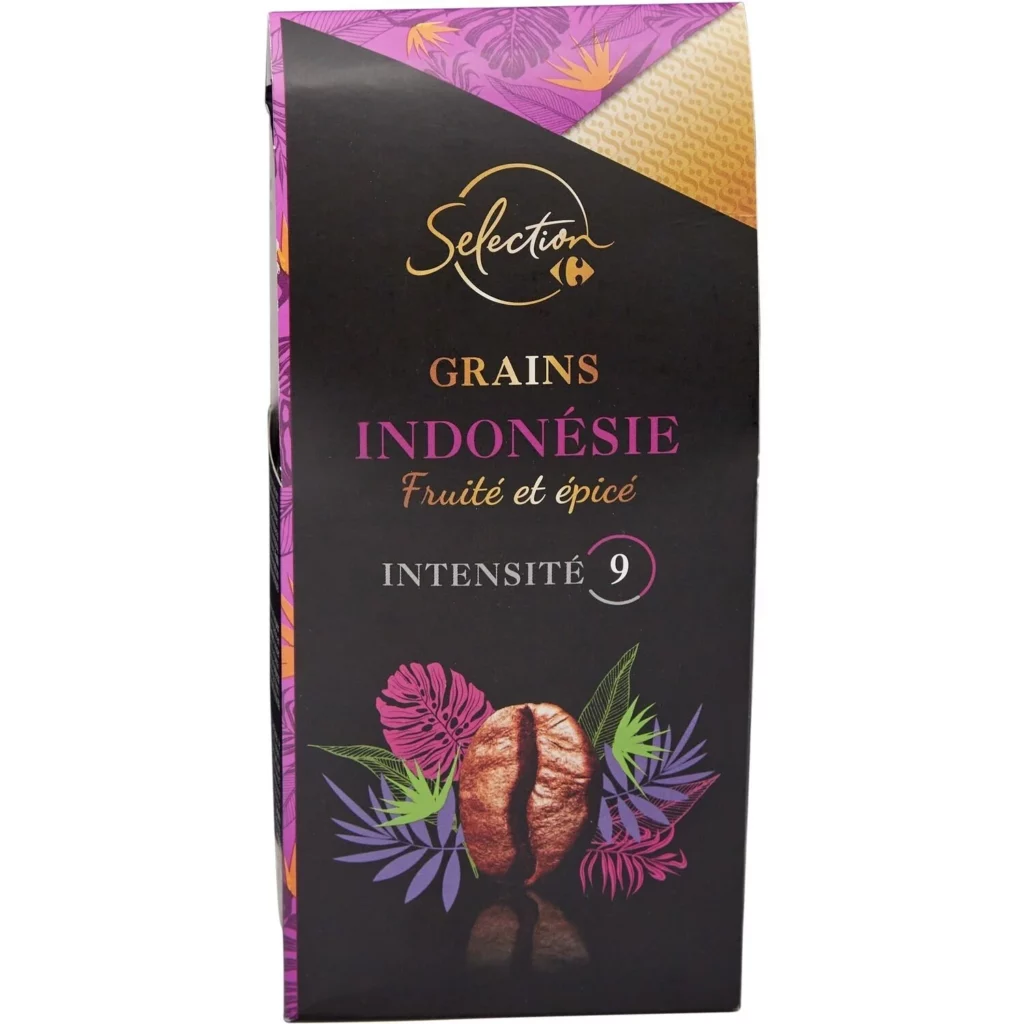
This Indonesian selection from Carrefour is highly reminiscent of Ethiopian coffee. It has a robust body with woody notes, but it’s less bitter and overall more balanced.
I was surprised to find that, contrary to my expectations of Indonesian coffee containing Robusta, this blend is actually 100% Arabica. In my opinion, it has more sweetness and fruity notes than Ethiopian coffee, though the woodiness is still present.
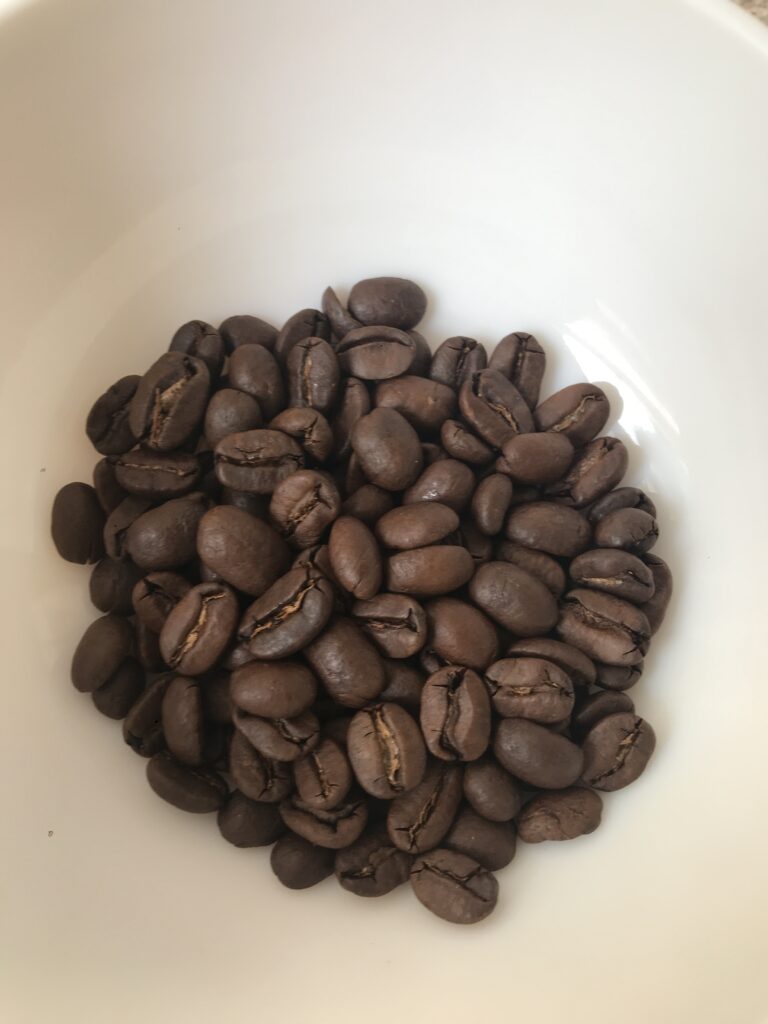
Overall, I really enjoyed this coffee; it has a great flavor without being as intense as its intensity 9 rating might suggest.
General notes :
- Balanced
- Little acidity
- Woody
- Earthy
Coffee Taster’s Flavor Wheel
- Other
- Papery / Musty
- Woody
- Papery / Musty
- Fruity
- Other fruit
When using a Moka Pot
The coffee had a medium roast, with well-sized, uniform beans. The taste was nicely balanced with woody notes, never overwhelming, and genuinely enjoyable.
It brings to mind a milder, more balanced version of Ethiopian coffee, with additional fruity notes.
When using an Hario V60
The coffee develops more body and maintains its balance. Interestingly, it’s the first coffee that loses some clarity with this brewing method. Perhaps the various flavors level out, providing a clearer picture of each component.
This is quite similar to the effect of the French Press method on other coffees.
When using a French Press
When brewed with a French Press, this coffee becomes more balanced and slightly less acidic. It’s a pleasant coffee with this method, though it doesn’t bring out the fullest range of flavors. Overall, I would still prefer using a Moka Pot with these beans.
11. Faubourg Café Brésil Bahia
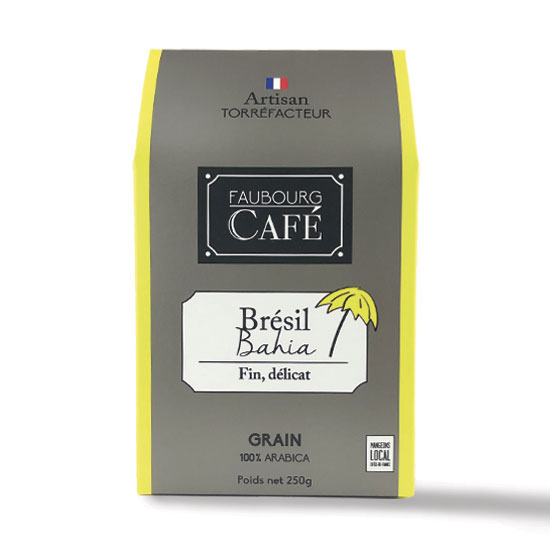
Since we thoroughly enjoyed two of the Faubourg Café varieties we previously tried—and since they also come in a convenient tasting format—we decided to stick with the brand and explore the Brésil Bahia. This coffee is notably fruitier and smoother.
As always, it brews perfectly, and the expiration date extends well beyond 2026. This is a great reassurance, ensuring a certain level of freshness for espresso preparation.
General notes :
- Fruity
- Lime acidity
- Earthy
Coffee Taster’s Flavor Wheel
- Other
- Papery / Musty
- Musty earthy
- Papery / Musty
- Fruity
- Citrus fruit
- Lime
- Citrus fruit
Using an espresso Machine
When brewed with an espresso machine, this coffee performs exceptionally well. I find it to be one of the most complex offerings from this brand, yet it still maintains a certain balance.
It leans distinctly toward the fruity side, with a flavor reminiscent of lime—though not overly acidic, more akin to citrus notes. While this coffee is enjoyable, it feels slightly less balanced and unique compared to the other two.
12. Lavazza Tales of Roma
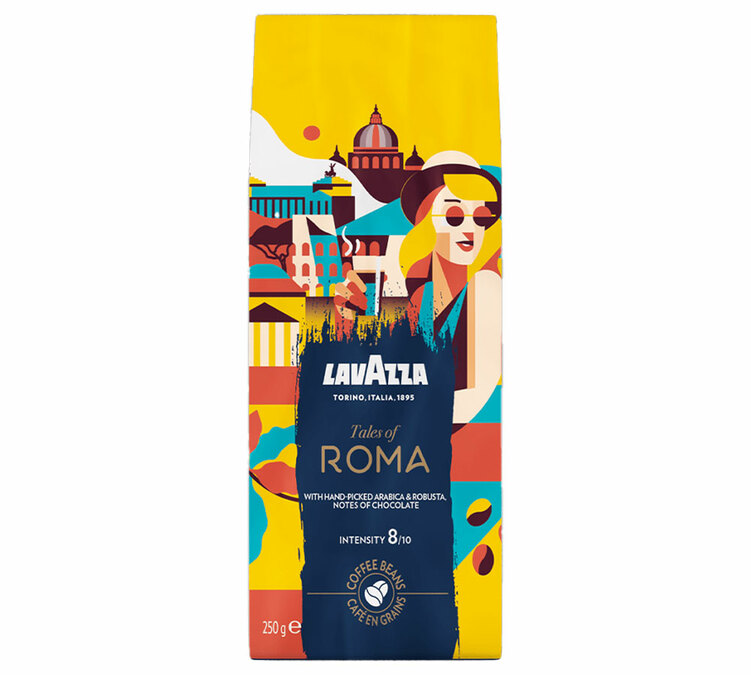
Lavazza Tales of Roma is, in my opinion, one of the blends that comes closest to the French coffee style. It has a classic profile, marked by low acidity and a noticeable, balanced bitterness.
It’s a very good coffee that, in my opinion, will appeal to most palates. However, I find it lacks a unique character that would make it truly memorable.
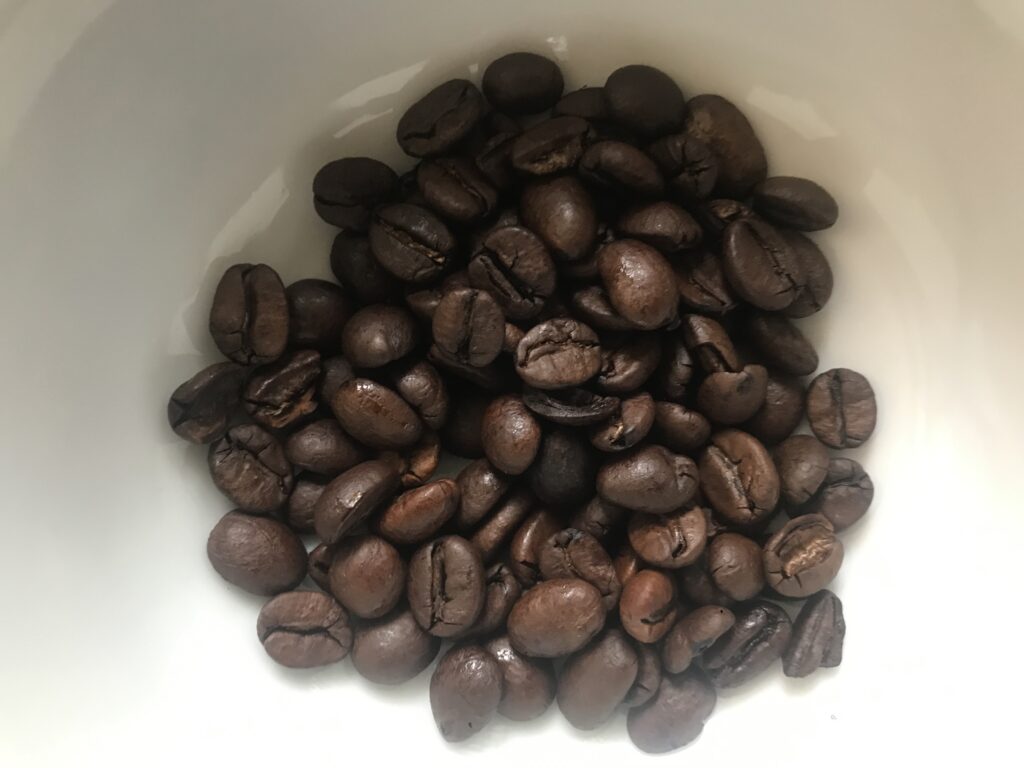
General notes :
- Low acidity
- Slightly bitter
- Dark Chocolate
Coffee Taster’s Flavor Wheel
- Roasted
- Cereal
- Nutty / Cocoa
- Cocoa
Using an espresso Machine
When using an espresso machine, this coffee requires a finer grind than usual—or a higher dose—to achieve a properly dense puck.
Interestingly, the crema it produces stands out as well. It’s unusually dark and has a distinct appearance. I’m not sure whether that’s due to the beans being too fresh, too old, or well-degassed, but it definitely looks different from most coffees I’ve tried.
13. Auchan Perou Bio
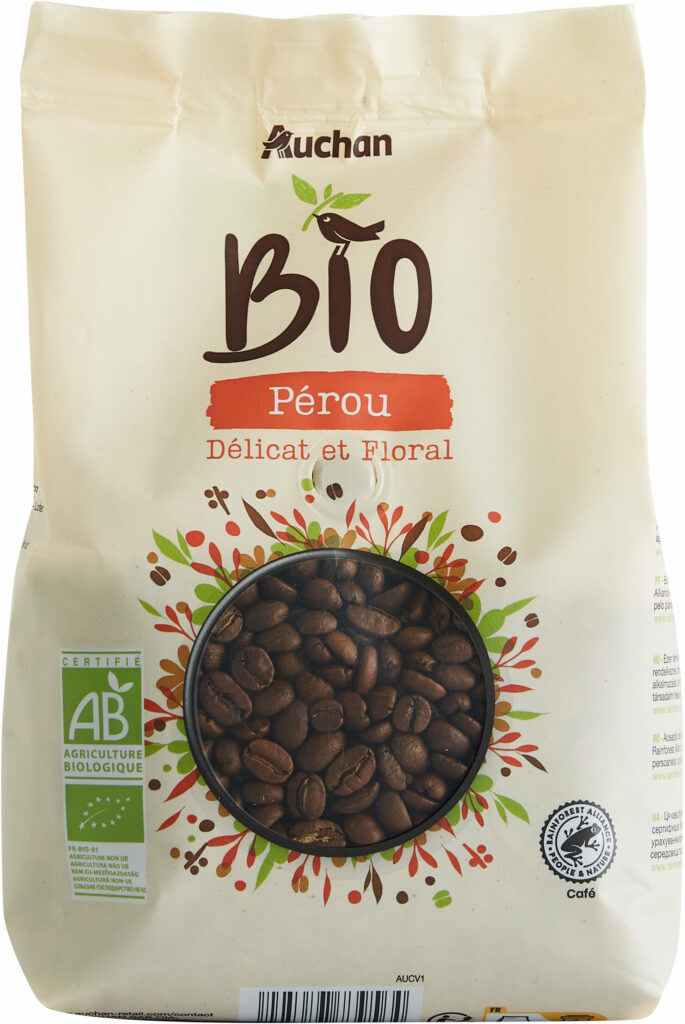
This coffee is quite similar in profile to Nespresso’s organic coffee from Peru, which is also easy to drink and very floral. However, this freshly roasted version offers more taste and complexity.
General notes :
- Medium acidity
- Floral
- Delicate
Coffee Taster’s Flavor Wheel
- Fruity
- Citrus fruit
- Orange
- Citrus fruit
- Floral
- Jasmine
When using a Moka Pot
While coffee from Peru is quite enjoyable on its own, I believe blending it with something bolder could make it truly exceptional.
When using an Hario V60
Interestingly, using the pour-over filter method reduces acidity, resulting in a more balanced and precise coffee. The fruity flavors become more prominent, though the floral notes remain detectable.
I anticipated more pronounced floral notes with this technique, but instead, I achieved a balanced flavor profile that is pleasant although not extremely complex.
When using a French Press
When using a French Press, the coffee becomes more balanced and has less acidity. It tastes quite good, though I still believe the V60 offers better clarity.
Peruvian coffee is generally very mild in character, making it better suited for black coffee than other preparations.
Using an Espresso Machine
In my opinion, this coffee isn’t the best fit for an espresso machine. Some may prefer a milder espresso or milk-based drink, in which case these beans could work well.
However, I find it lacks the boldness and complexity one would typically expect from a pressurized extraction with a low ratio.
14. Malongo Italian Style
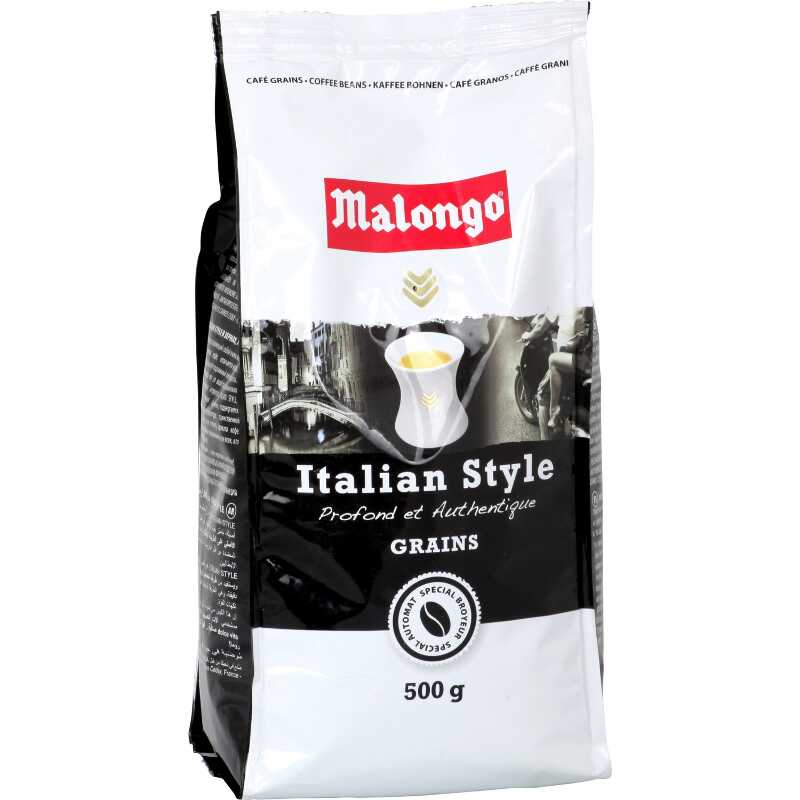
Malongo is a French brand specializing in the import and roasting of coffee, though they also appear to produce coffee machines. The brand is quite popular in France, with a wide selection of their coffee products commonly found on store shelves.
This coffee is a blend of three “grand cru,” a term that, to be honest, feels more like marketing jargon than anything meaningful. The origins of the beans aren’t specified, but the roasting style is crafted in the Italian espresso tradition.
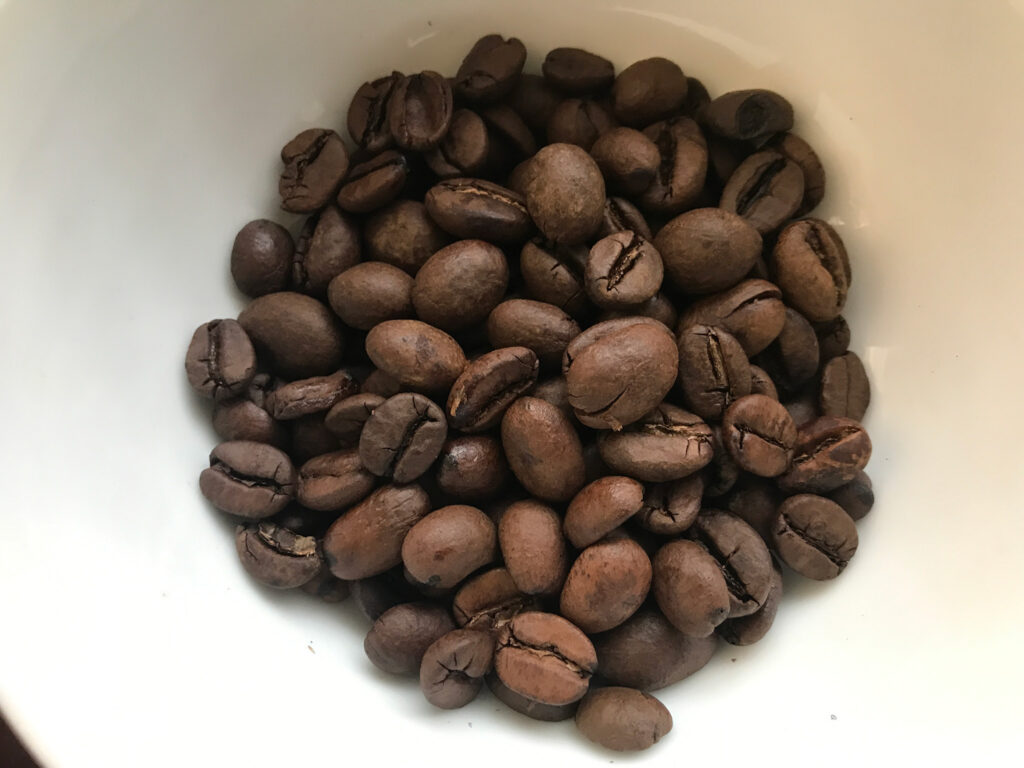
The coffee beans are quite dark but not to the point of being oily. The notes on the packaging suggest a strong coffee with no acidity and pronounced bitterness, which is largely accurate. However, the boldness and bitterness are not as intense as one might expect, offering a more balanced profile overall, very reminiscent of a classic french coffee without the bitterness.
General notes :
- Low bitterness
- No acidity
- Low sweetness
- Nutty flavors
Coffee Taster’s Flavor Wheel
- Nutty / Cocoa
- Cocoa
- Chocolate
- Cocoa
When using a Moka Pot
When brewed with a Moka Pot, this coffee delivers a well-balanced flavor with prominent nutty notes, though it could use a touch more sweetness.
Overall, it tastes like a classic coffee—exactly what you’d expect. It offers a pleasant bitterness that isn’t overpowering, accompanied by a strong nutty and chocolaty profile. However, it lacks any notable complexity or uniqueness. While it’s a solid option, it falls slightly short of having a distinct character for my personal taste. But for people who love classic coffee it’s a great choice.
When using an Hario V60
When brewed with a Hario V60, the coffee comes out quite bitter, with a slightly burnt taste. This method doesn’t highlight any unique characteristics of the coffee; in fact, it does the opposite, making it taste rather generic, like most standard coffees.
Using an Espresso Machine
This coffee truly shines when brewed with an espresso machine. Its smoothness makes it a favorite among espresso aficionados, especially for how effortlessly it produces perfect shots.
In terms of flavor, it’s certainly intriguing but still a bit flat and too bitter for my taste. However, for those who enjoy a well-balanced, bitter coffee, it would be an excellent choice.
When combined with condensed sweet milk and regular milk, it becomes nearly indistinguishable from cocoa. Personally, I love it.
15. Carte Noir Grain Classique
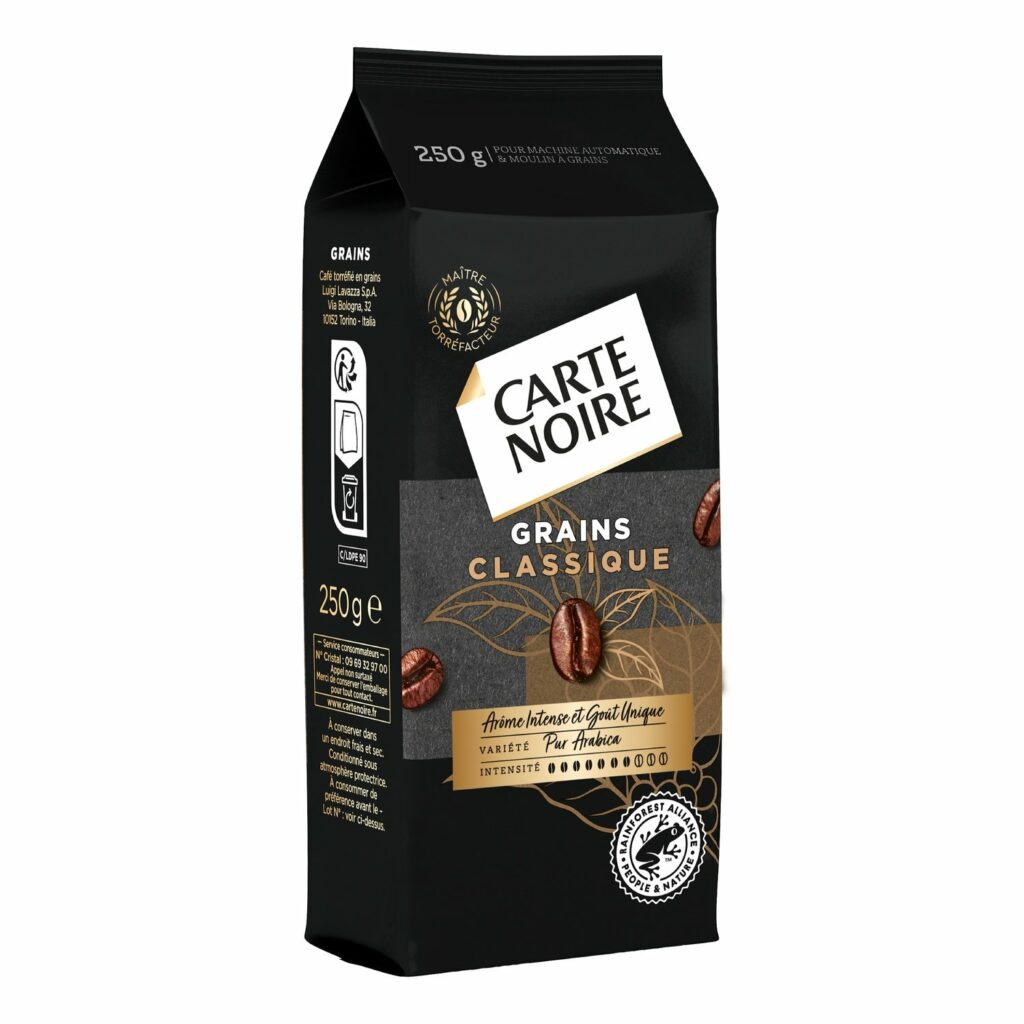
I wanted to include at least one well-known French coffee brand in this review, and Carte Noir is probably the most iconic.
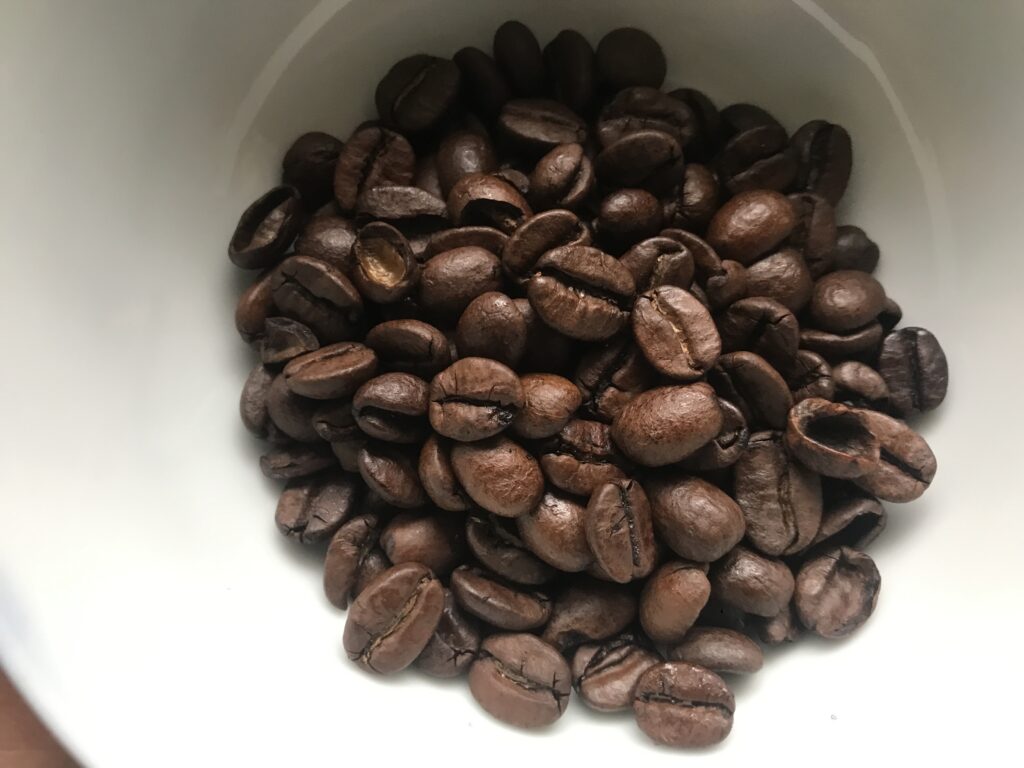
The first thing to note is that, in my experience, whenever I order an espresso in France, it’s often very bitter. I have to believe that this intensity is something ingrained in the French taste. This coffee is still a medium roast and is very close to being a dark roast.
In this category, Carte Noir offers a coffee with a bold spiciness that is actually quite enjoyable. If this style of coffee was my preference, it would rank even higher on my list. While it is spicy and bitter, it also has a great balance of flavor, acidity, and sweetness. Overall, it’s one of the best-balanced bitter coffees I’ve tried.
General notes :
- Spicy
- Bitter
- Acidity
- Sweetness
Coffee Taster’s Flavor Wheel
- Fruity
- Citrus fruit
- Lemon
- Citrus fruit
- Burnt
- Ashy
- Others
- Papery / Musty
- Woody
- Papery / Musty
- Sweet
- Sweet aromatics
- Nutty / Cocoa
- Cocoa
- Dark Chocolate
- Cocoa
When using a Moka Pot
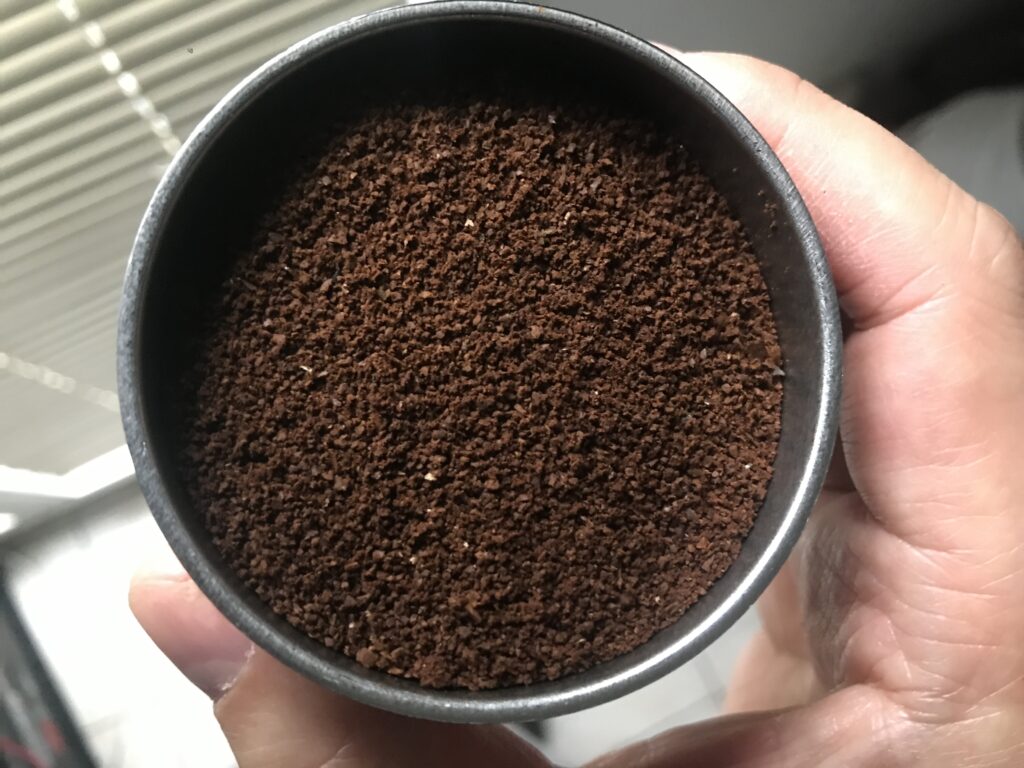
This coffee is strong yet well-balanced, delivering a wealth of flavors and complexity—perhaps one of the most intricate in this lineup.
When brewed with a Moka Pot, it offers an enjoyable experience, starting with a bold burnt and spicy flavor that gradually evolves into notes of acidity and sweetness. You can definitely pick up on the chocolaty undertones as well.
It strongly evokes the essence of a classic French-style espresso but in a much more pleasant way, holding its own against Italian espresso.
When using an Hario V60
When brewed with a Hario V60, this coffee results in a more diluted version compared to the Moka pot method. While I don’t think it’s the best way to experience this coffee, some people still find it enjoyable enough to choose this option.
I would recommend using a ratio of 20 grams of ground coffee to 250 ml of water to maintain a bit of intensity in the flavor.
When using an espresso machine
This coffee is decent for an espresso, embodying the classic French style—bitter yet balanced and straightforward. However, it lacks the richness of Italian espresso, which typically preserves acidity and fruity notes.
16. Lavazza Tales of Napoli
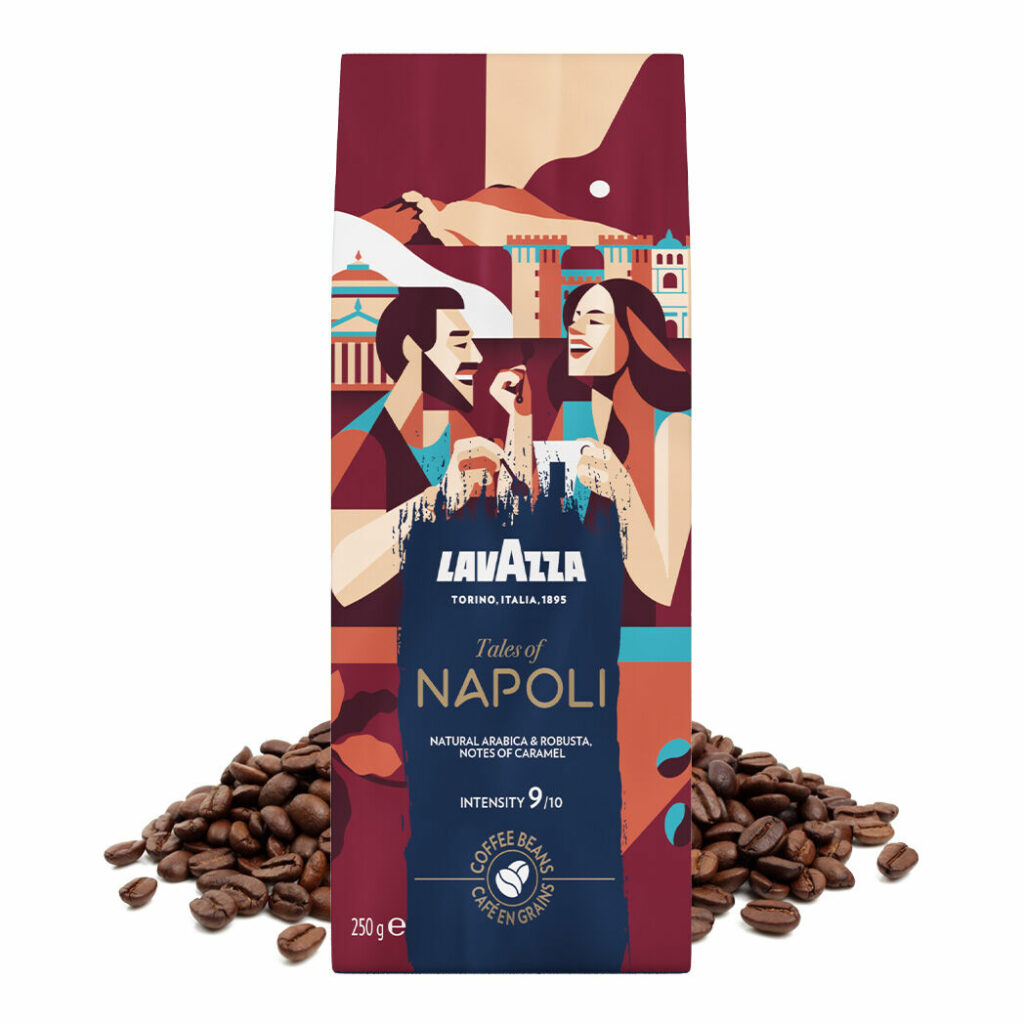
Lavazza Tales of Napoli is an espresso blend that includes some Robusta beans, in line with Italian tradition. While Robusta is typically more bitter than Arabica, it also contributes to a rich, smooth crema.
I wanted to feature a Robusta blend in this review, and since Lavazza Oro has always been my top choice, it made perfect sense to stick with the same brand for this selection.
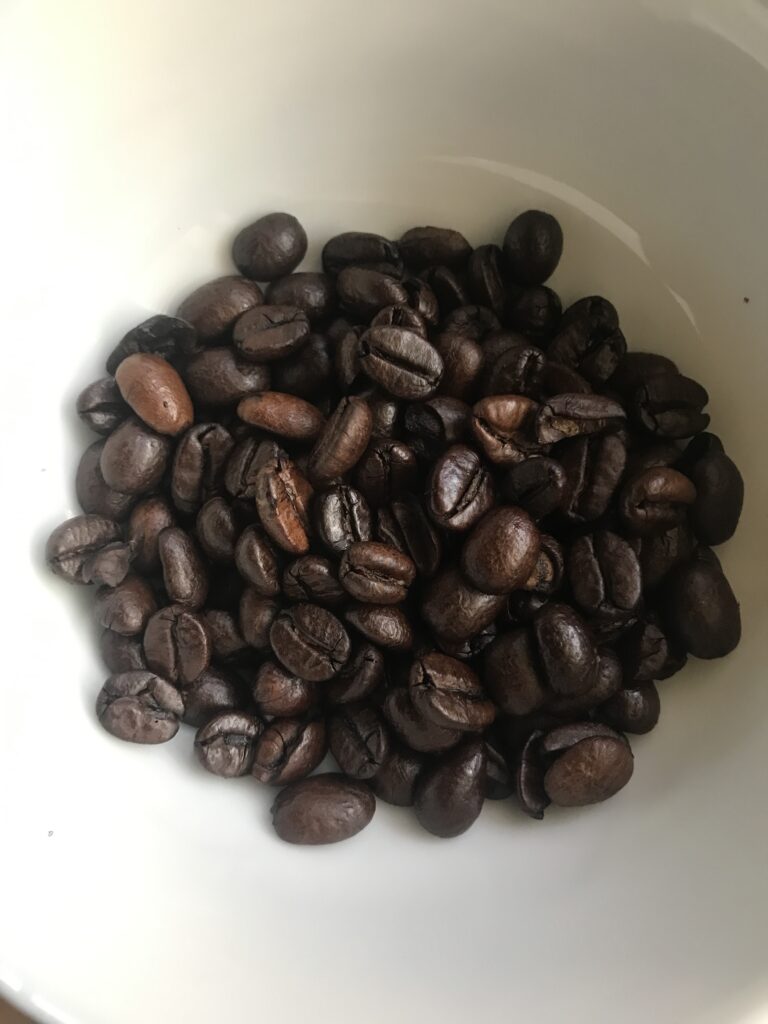
This is easily the darkest roast I’ve encountered with fresh beans. They’ve definitely gone through the second stage of degassing and are coated in oil. It’s unmistakably a dark roast, and I have to say, they look quite tempting.
By examining the beans, you can tell from their shape and the lines that they contain more Arabica than Robusta. This coffee is ideal for those who enjoy adding milk to their brew or prefer a very strong coffee with ashy undertones.
General notes :
- Bitter
- Caramel
- Smoky
Coffee Taster’s Flavor Wheel
- Sweet
- Brown sugar
- Molasses
- Brown sugar
- Roasted
- Burnt
- Ashy
- Burnt
When using a Moka Pot
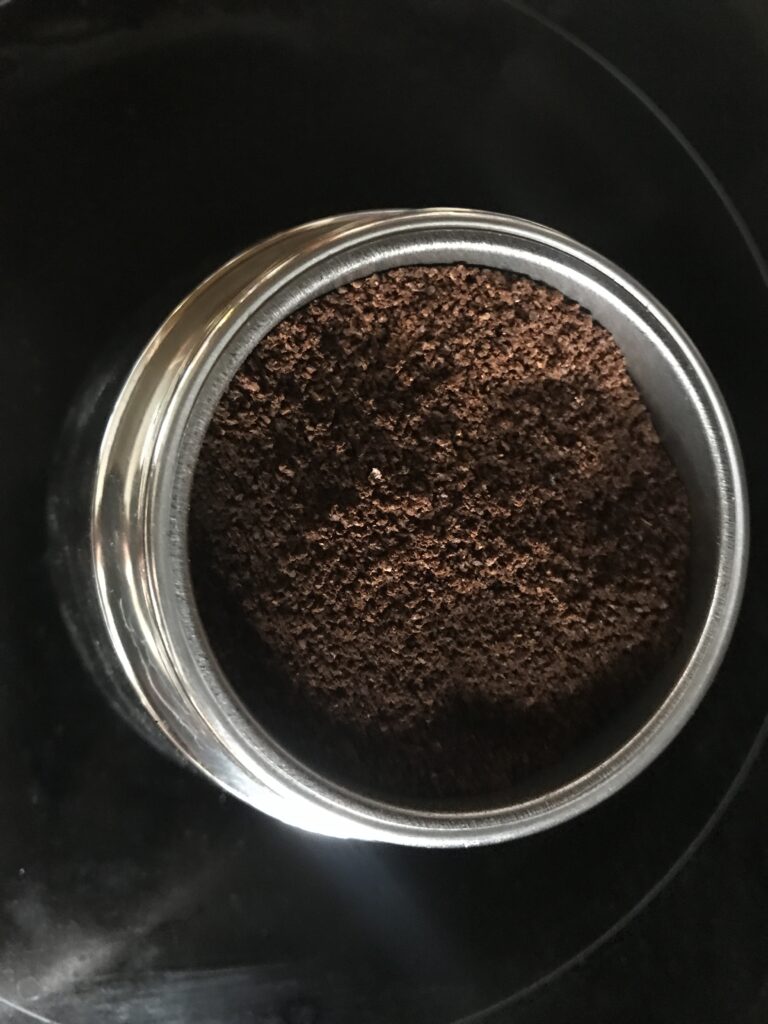
Since it’s an espresso blend, I naturally opted for the Moka pot for the first try, as it closely mimics the concentrated, strong flavor of espresso.
The first thing I usually notice with a dark roast is that, for the same weight, you end up with more beans and therefore more ground coffee. Because darker roasts lose more moisture and are lighter, they take up more volume. They dissolve better at lower temperature as well.
I can certainly attest that Robusta packs a serious caffeine punch—a double espresso almost makes me jittery compared to a regular 100% Arabica blend.
As for the taste, while Robusta does introduce an ashy note, it also brings a unique aroma that Arabica lacks. It’s difficult to describe, but it’s quite enjoyable. I’m confident that when mixed with milk, this blend would add an extra layer of complexity to the coffee.
When using an Hario V60
I find this to be one of the least interesting coffees when brewed with a V60. It lacks acidity entirely and has almost no floral notes. It’s akin to drinking water mixed with charcoal.
I had hoped this brewing method would highlight some sweetness or a hint of chocolate, but nothing comes through from this dark roast when using the V60.
At least it retains some form of balance and is not overly bitter.
When using an Espresso Machine
With an espresso machine, this dark coffee extracts exceptionally smoothly, but it’s a bit too intense for my taste.
However, the bitterness and robusta notes blend nicely with milk. In Vietnam, it would be ideal for iced coffee, providing the strength needed to contrast with the milk.
17. Illy Classico Grain
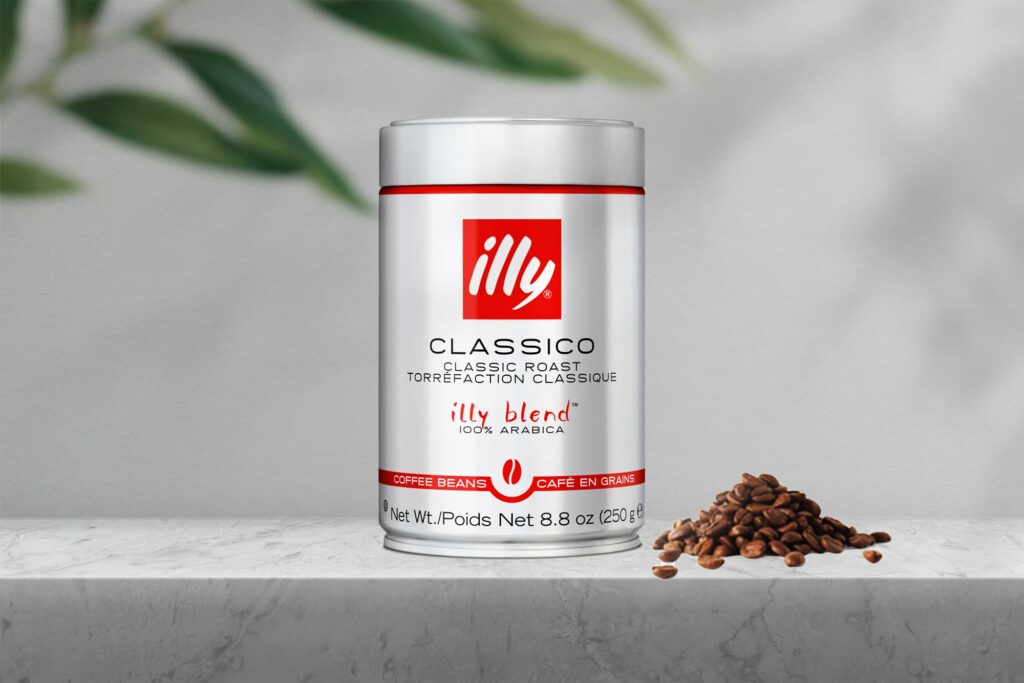
I’ve come across mixed reviews about this specific brand and coffee blend from Illy. I read that it’s one of the most commonly used blends in commercial coffee, which naturally piqued my curiosity.
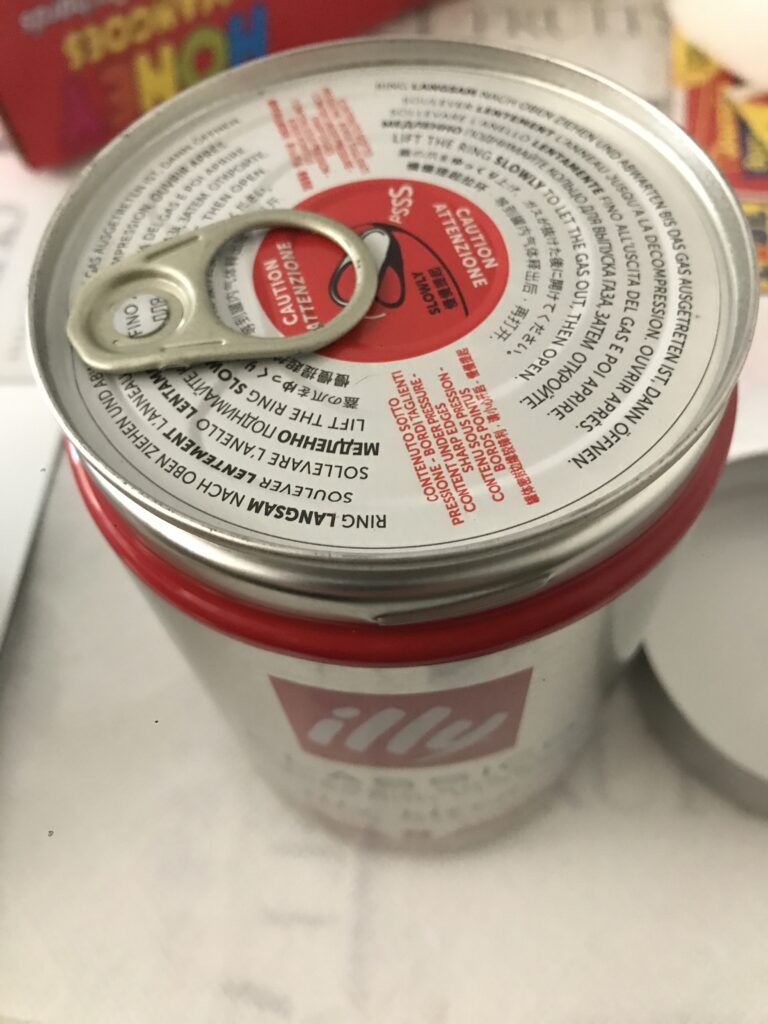
It’s a medium roast, described as soft and velvety. Some reviews criticized it for lacking flavor and tasting burnt, while others praised it for its sweetness and balance. I had to try it for myself, especially since I was intrigued by the original iconic design as well.
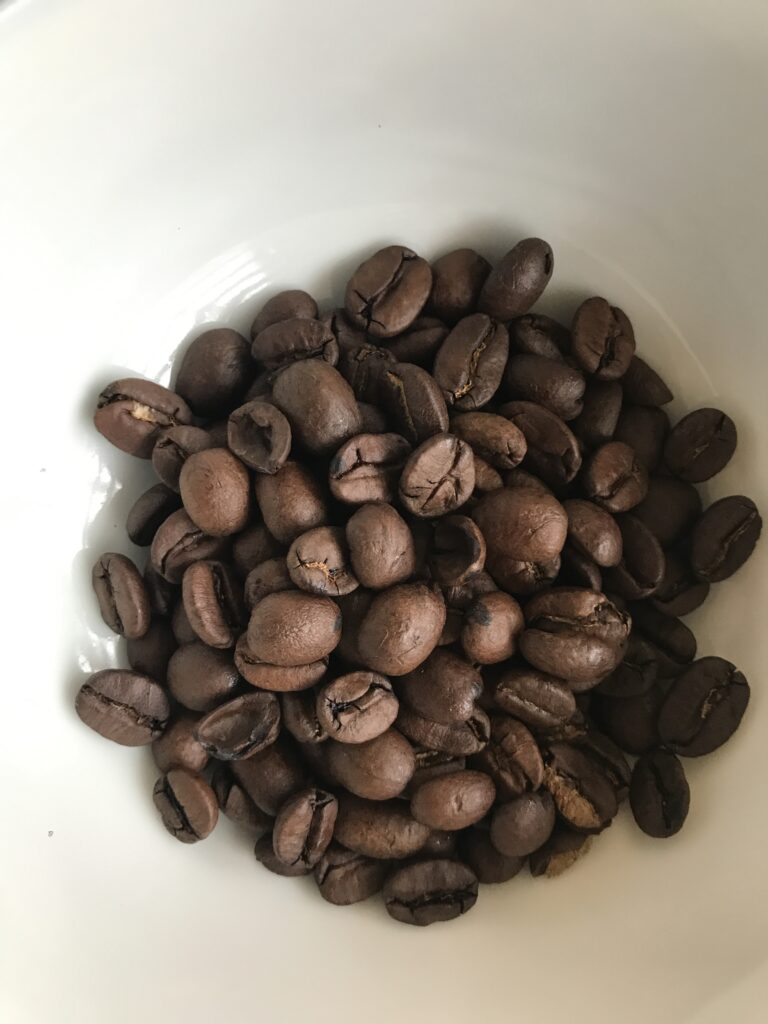
Like many have said before, this coffee definitely smells fermented when removing the seal for the first time. It has this distinct fermented smell that you get with Brazilian coffee beans.
Visually, they’re decent, but I’m accustomed to seeing better size and quality in other blends.
General notes :
- Spicy
- Cinamon
- Tobacco
Coffee Taster’s Flavor Wheel
- Spicy
- Brown spice
- Cinnamon
- Brown spice
- Roasted
- Pipe Tobacco
When using a Moka Pot
When brewed with a Moka Pot, this coffee becomes quite interesting. It has a flavor reminiscent of hard liquor, like whisky, with an initial burnt, spicy taste that quickly fades and then completely disappears.
This is intriguing because, typically, coffee leaves an aftertaste or lingering flavors. But in this case, it’s more like a brief burst of flavor that quickly evaporates.
I thoroughly enjoyed the experience, though I wished this coffee had more chocolaty or brown sugar notes. It’s certainly a balanced blend but lacks a lingering aftertaste or depth of flavor after the initial explosion.
When using an Hario V60
Interestingly, the Illy Classico transforms into a beautifully balanced coffee when brewed using the pour-over method.
While it may not be the most floral or fruity coffee, it certainly reveals a wider range of flavors, becoming surprisingly enjoyable. It definitely loses the smoky, spicy burn and reveals subtle floral notes along with a mild acidity.
For me, when using a V60, it has become one of my favorite blends.
Using an Espresso Machine
When brewed with an espresso machine, this coffee delivers a solid and balanced flavor with a hint of bitterness, though it lacks the depth and richness found in some other options.
To me, it has a straightforward profile, somewhat reminiscent of Carte Noire Classic—leaning more towards a French style rather than an Italian one.
18. Starbucks Single-Origin Colombia Whole Beans
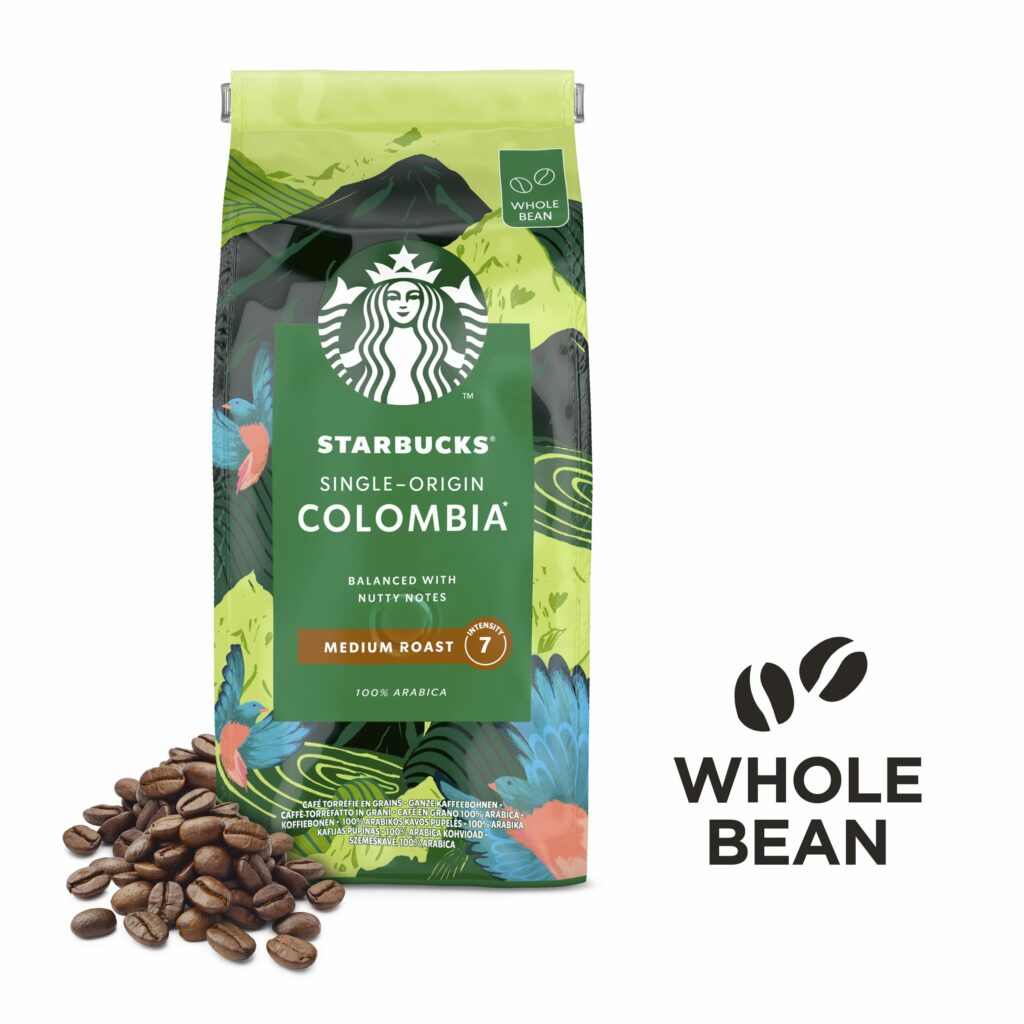
Starbucks is a globally recognized coffee chain, often known for its large, milk-heavy mixed drinks. To get a clearer sense of what their coffee truly offers, I decided to try one of their whole bean varieties and share my thoughts.
The first thing that stood out was the packaging—it was well-designed, featuring adhesive tape to reseal the bag. A positive detail was the inclusion of the roast date, which showed the beans were roasted in February and purchased at the end of March. However, the downside was that this was nowhere near a medium roast. Compared to the reference image above, this was by far the darkest roast I’ve ever bought.
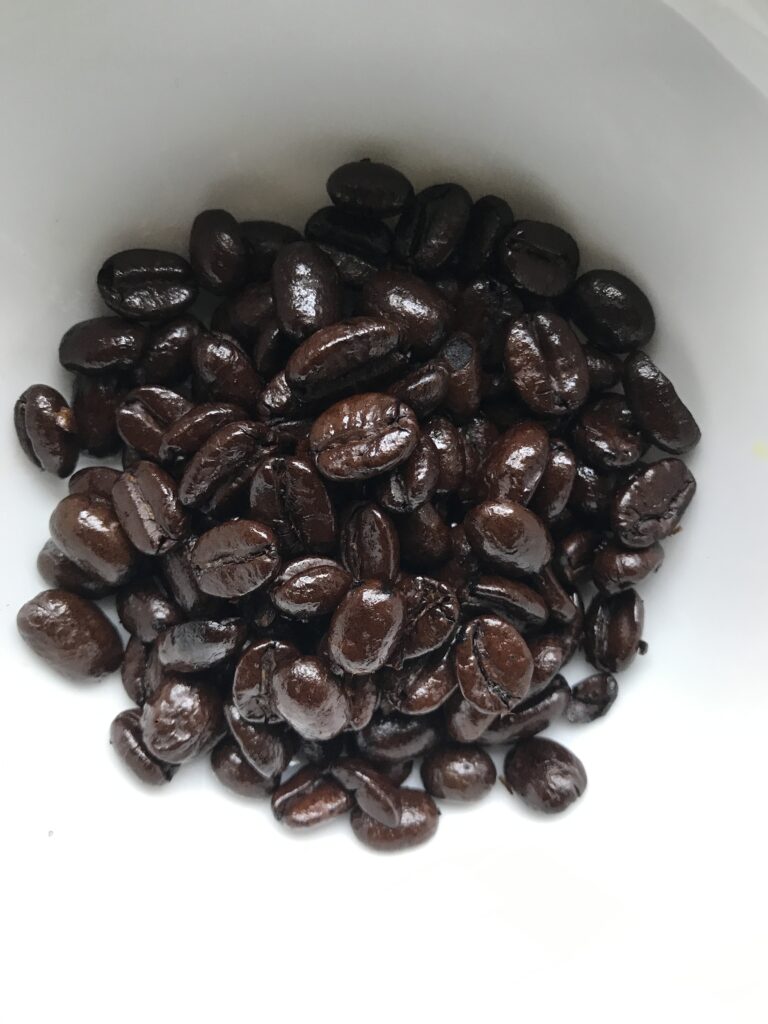
General notes :
- Burnt
- Nuts
Coffee Taster’s Flavor Wheel
- Nutty/cocoa
- Nutty
- Hazelnuts
- Nutty
- Roasted
- Burnt
- Ashy
- Burnt
Using an espresso machine
This coffee was roasted so dark that my hand grinder met no resistance while grinding. The extraction process was smooth and effortless. Tasting it black, the flavor was intensely strong, with pronounced notes of ash and burnt tones, though there was also a depth of richness beneath it.
When combined with milk, the taste improved significantly—I’d even say it works well for milk-based drinks—but it still had a distinct burnt undertone which can be dialed down by extracting in shorter times.
After drinking it, both my wife and I felt unwell. We’re still trying to determine if the coffee was to blame, especially since we had only a small amount and it contains no Robusta beans. There’s something oddly suspicious about this particular bag of medium roast coffee.
The next day, I tried the coffee again with a shorter extraction to minimize the burnt taste, and it turned out more balanced. When mixed with milk, it had a remarkably nutty flavor. However, I still can’t figure out why this coffee seems to have a much stronger caffeine kick compared to my other beans.
19. Lidl Bellarom Zambie AAA Single Origin
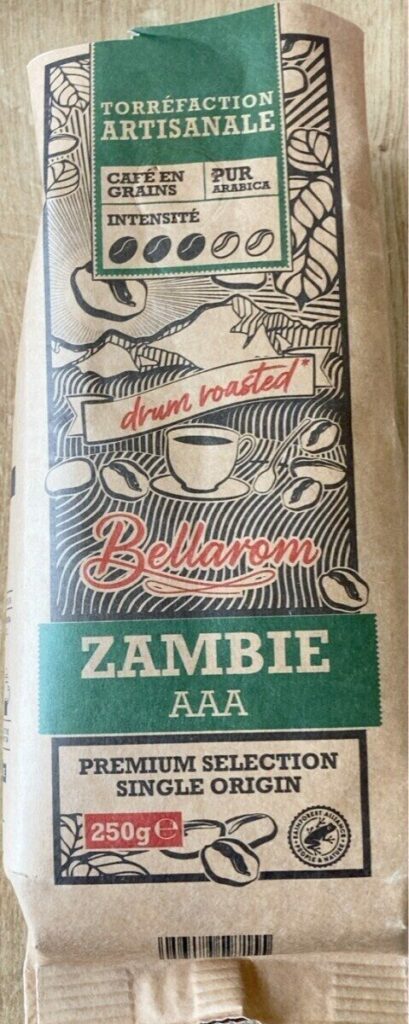
This was my first single-origin coffee, and I was pleasantly surprised by the affordable price of 3.50 euros for 250 grams.
General notes :
- Spicy
- Balance
- Little acidity
- Strong body
- Fruity
Coffee Taster’s Flavor Wheel
- Fruity
- Other
- Peer
- Other
- Burnt
- Smokey
When using a Moka Pot
Although the bag labels it as a “premium selection,” let’s be honest—you won’t find premium beans at this price. Nonetheless, the coffee still tastes very good. It has plenty of character and complexity while maintaining a nice balance.
When using a V60
This coffee brewed through a V60 has a distinct character. It is quite balanced and fruity, with a hint of smoky flavor at the beginning that is very pleasant. The acidity has a subtle pear-like quality.
20. Lidl Bellarom Colombia Supremo
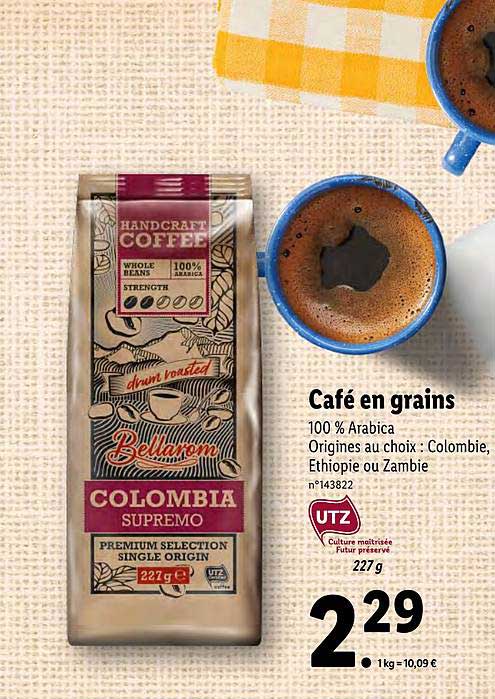
Colombian coffee is arguably among the best in the world. It was my favorite Nespresso option, so it felt only natural to try a whole bean version.
Although Carrefour offered one with an amazing aroma, buying a kilogram of coffee isn’t the most practical way to sample something new. That’s why, when I came across a 500g pack at Lidl, I decided to give it a shot.
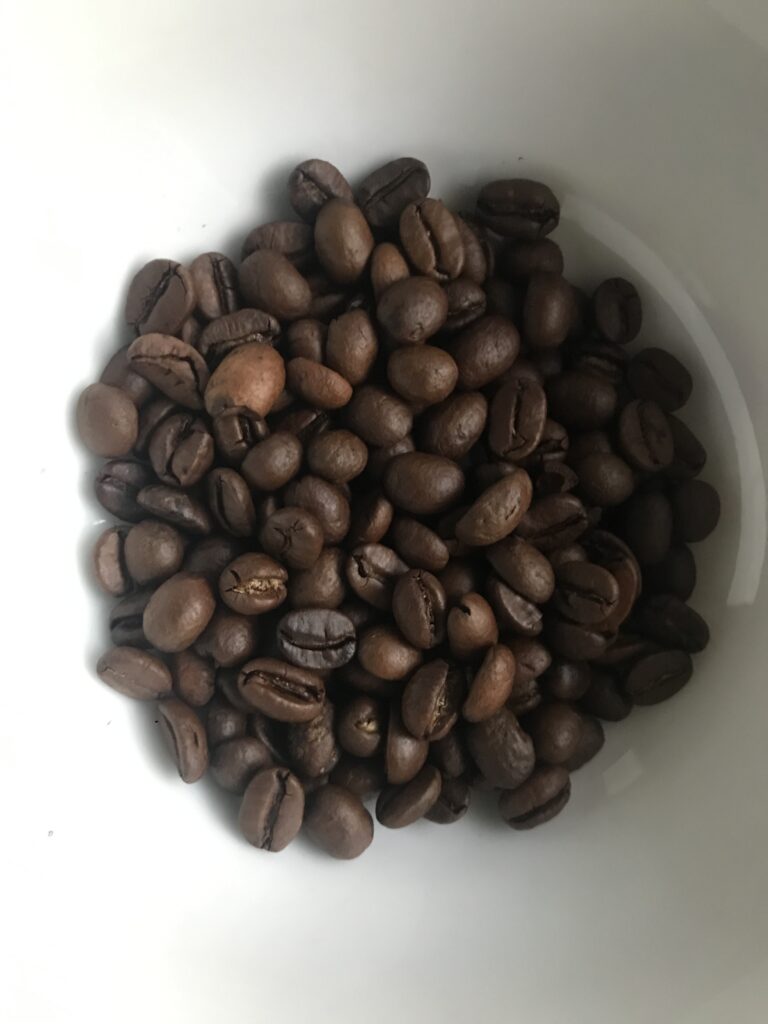
Given my previous experience with Bellarom, where their coffee lacked the sweetness that comes with freshly roasted beans, I approached this one with some hesitation. Additionally, the low price didn’t exactly inspire confidence in its quality.
This coffee is unmistakably Colombian, offering a well-balanced profile with pleasant acidity and a natural flavor. While it may not be the most complex or the finest Colombian coffee you’ll find, it’s a solid option with little to criticize. The medium roast results in minimal bitterness, though it does lack some of the rich, chocolaty notes you might expect.
General notes :
- Fruity
- Low bitterness
- Great balance
Coffee Taster’s Flavor Wheel
- Fruity
- Citrus fruit
- Orange
- Citrus fruit
- Nutty / Cocoa
- Nutty
- Almond
- Nutty
- Floral
- Black tea
When using a Moka Pot
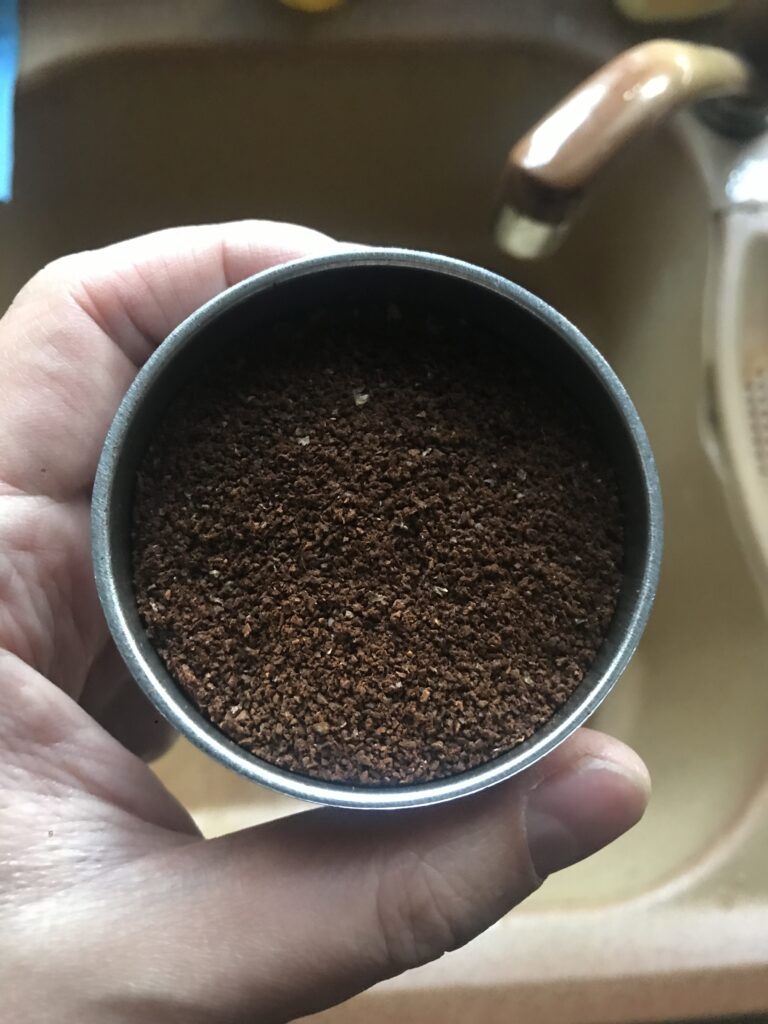
When brewing this coffee with a Moka pot, it extracted very quickly, so I had to make a few adjustments to achieve a more concentrated brew.
My first attempt was a bit watery, but after it cooled down, the flavor improved significantly. It was quite enjoyable, though it lacked a bit of the sweet, sugary notes—possibly due to the medium roast or the coffee’s freshness.
Overall, this brewing method produced a solid cup of coffee that could easily become a daily go-to for someone.
When using an Hario V60
Using the pour-over filter method to brew this coffee enhances its clarity, allowing the fruity aroma to shine through. Overall, I find this method to be just as effective as using a Moka Pot.
Honestly, it would be difficult to choose between the two, as Colombian coffee truly excels in maintaining balance and a pleasant flavor, regardless of the brewing technique.
21. Lidl Bellarom Ethiopie Limu Single Origin
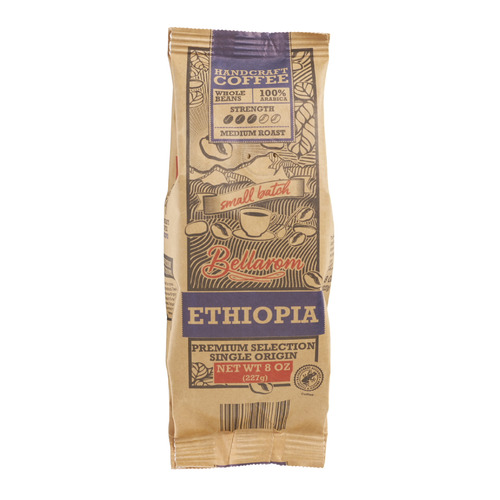
I was quite impressed with Nespresso’s Ethiopian coffee, Inizio, which had some intriguing characteristics. Because of that, I had high expectations for this specialty coffee from Limu.
General notes :
- Bitter
- Little acidity
- Cereals
- Earthy
Coffee Taster’s Flavor Wheel
- Roasted
- Burnt
- Ashy
- Burnt
- Spice
- Pungent
- Other
- Musty / earthy
When using a Moka Pot
The coffee had a medium roast, and the beans were not very large. While the taste was decent, I felt it lacked balance. Perhaps this coffee would be better suited to a pour-over technique.
When using a V60
This coffee starts off with a slight bitterness or smokiness, but after a few more sips, it transforms into a very interesting, balanced, and fruity brew that retains its earthy quality.
Bonus round : MR. VIET Cà Phê Chon
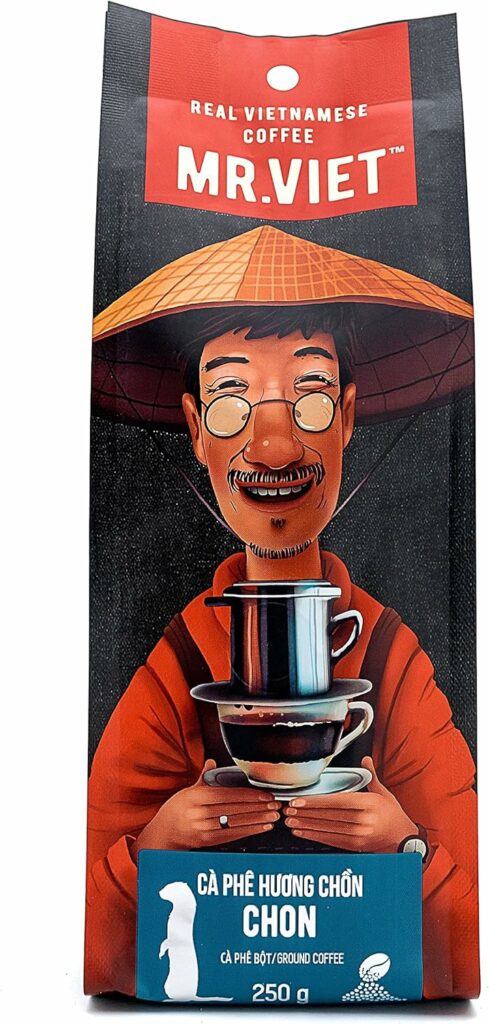
This is a gift I bought for my dad a few years ago, and I recently came across it. The coffee expired in April 2024, but since it’s never been opened, we believe it can still be consumed without much risk. The flavor might have changed slightly, though.
Just to note, if there’s a version of this coffee available in whole beans, we opted for the ground version because we didn’t have a grinder at the time.
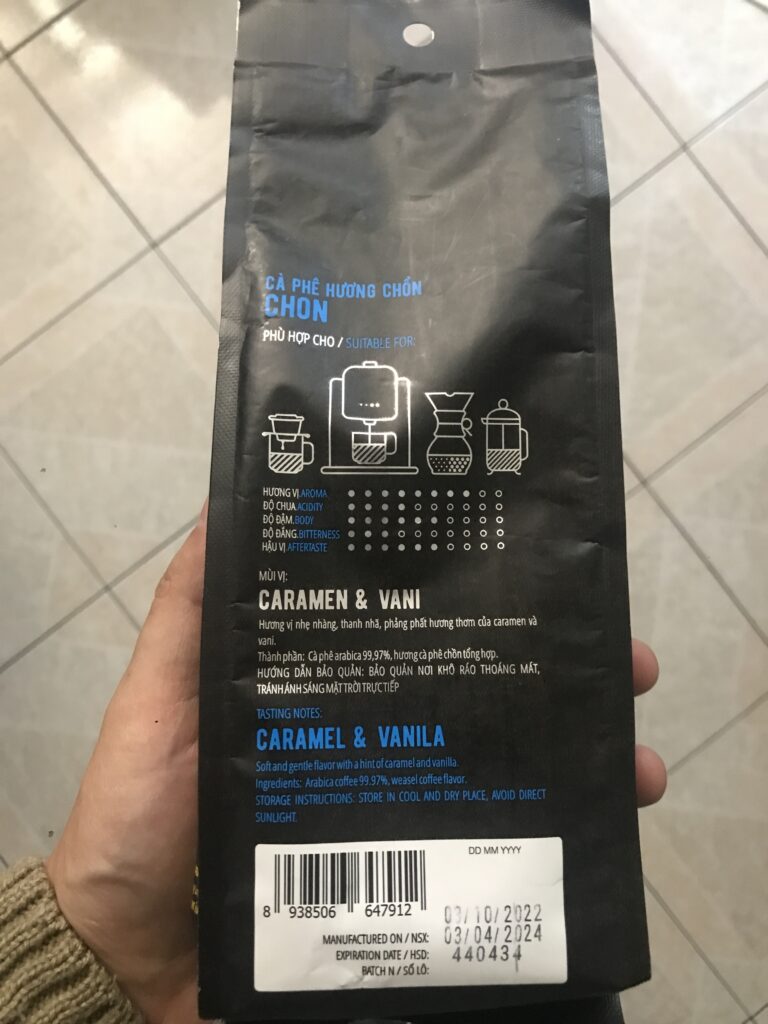
Cà Phê Chồn is essentially the Vietnamese equivalent of Kopi Luwak, a coffee that undergoes a unique “roasting” process by being digested by a civet.
Interestingly, this coffee is actually 99.97% Arabica, even though Vietnam is widely recognized as the world’s leading producer of Robusta.
In terms of taste, this coffee is by far the most intriguing I’ve ever tried, as it was the biggest departure from anything I’ve experienced before. It had absolutely no bitterness and featured a strong flavor of light oak, with distinct notes of vanilla and caramel. Honestly, it tasted great, but it was very different from what you would typically expect from coffee.
General notes :
- Oaky
- Vanilla
- Light Caramel
- Orange peel zest
Coffee Taster’s Flavor Wheel
- Sweet
- Vanilla
- Brown sugar
- Caramelized
- Papery / Musty
- Woody
- Fruity
- Citrus Fruit
- Orange
- Citrus Fruit
When using an Hario V60
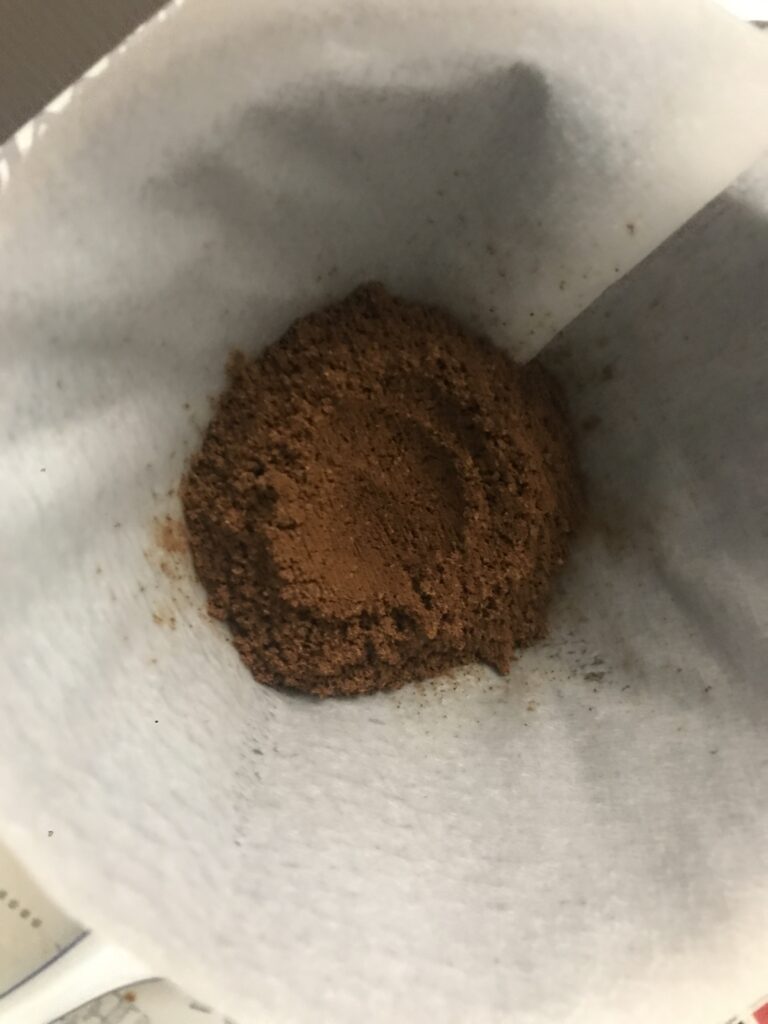
Two noteworthy points are that this is the lightest roast I’ve ever tried, and as a pre-ground coffee, it’s finely ground for espresso, with a texture finer than sand.
The fine grind size indicates that this coffee is meant to be brewed in the traditional Vietnamese style, which involves drip brewing without a filter. However, the packaging mentions that it can be brewed using any method.
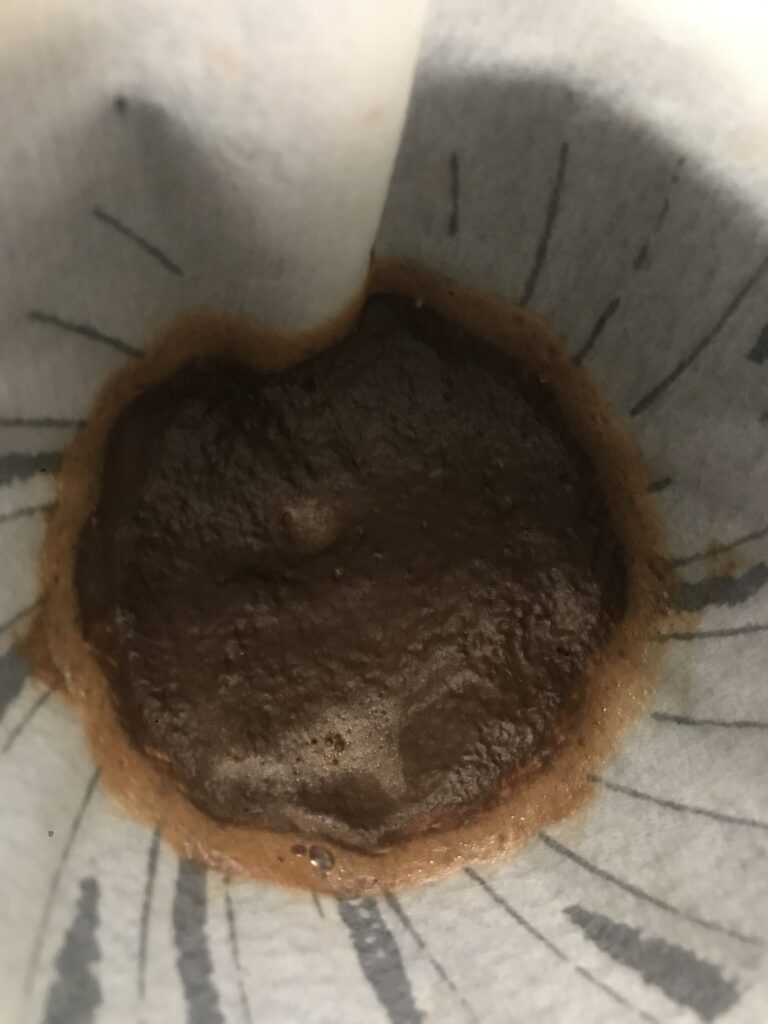
Using my reliable V60 to mimic the Vietnamese brewing style, it was no surprise that the coffee was too finely ground for pour-over, resulting in a very muddy experience.
The coffee had no acidity or bitterness, which is quite unusual for coffee. It really tasted like a malt beverage that had been aged in an oak barrel, with notes of vanilla and caramel. When the coffee cools down, it becomes easier to detect the fruity citrus flavors, especially orange with a slight acidity.
What I’ve learn from it
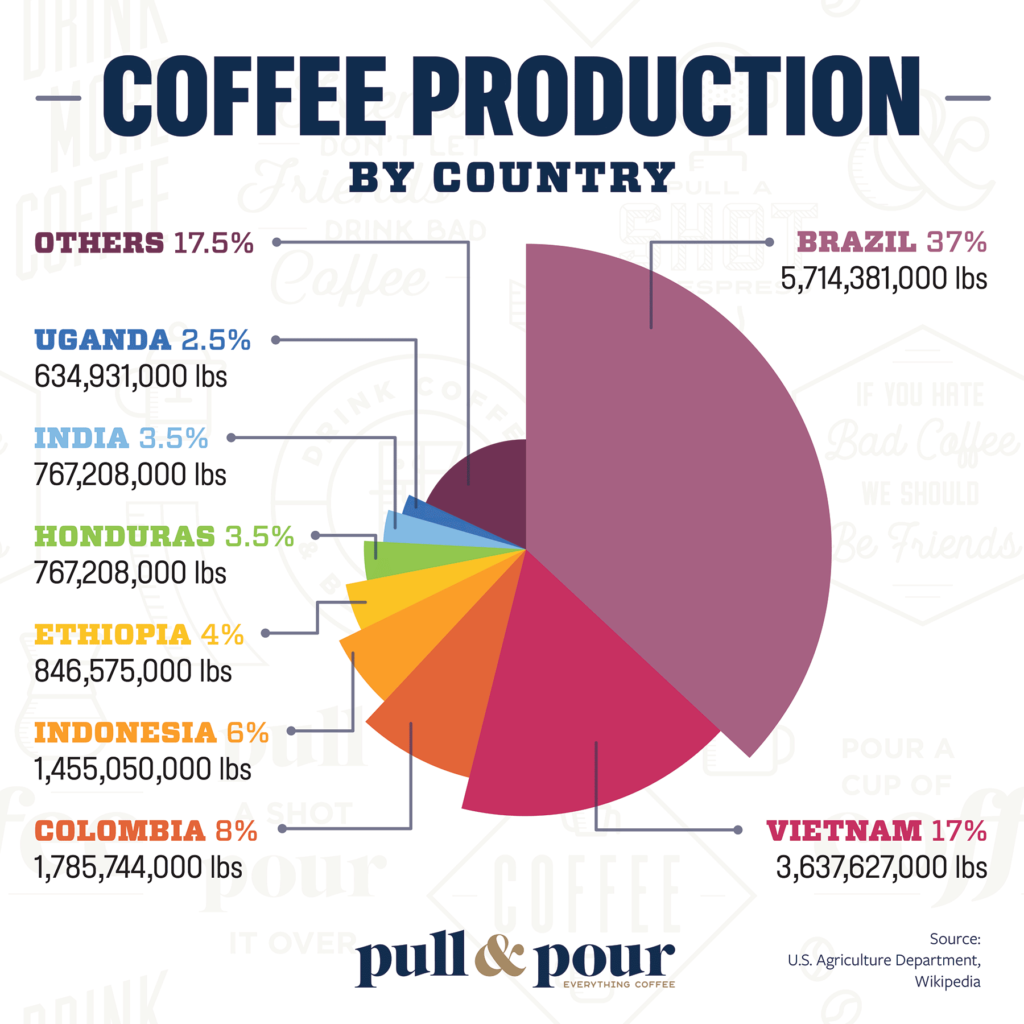
Freshness is paramount
When it comes to coffee, freshness is crucial for preserving its flavors. For instance, the single-origin coffees from Lidl were roasted in February, and even though they were stored in protective atmosphere bags, the aroma indicated they weren’t as flavorful as they should have been.
Today’s coffee bags often feature a valve system that allows CO2 to escape. In fact, the more CO2 you notice accumulating in the bag, the longer it indicates the beans have been outgassing.
Once coffee beans lose their freshness, their taste changes significantly, and the pleasant aromas disappear, leaving only the unpleasant ones. I think after one week coffee beans the difference will be noticeable. You need to remove all air from the container.
Roast color doesn’t necessarily dictate the taste
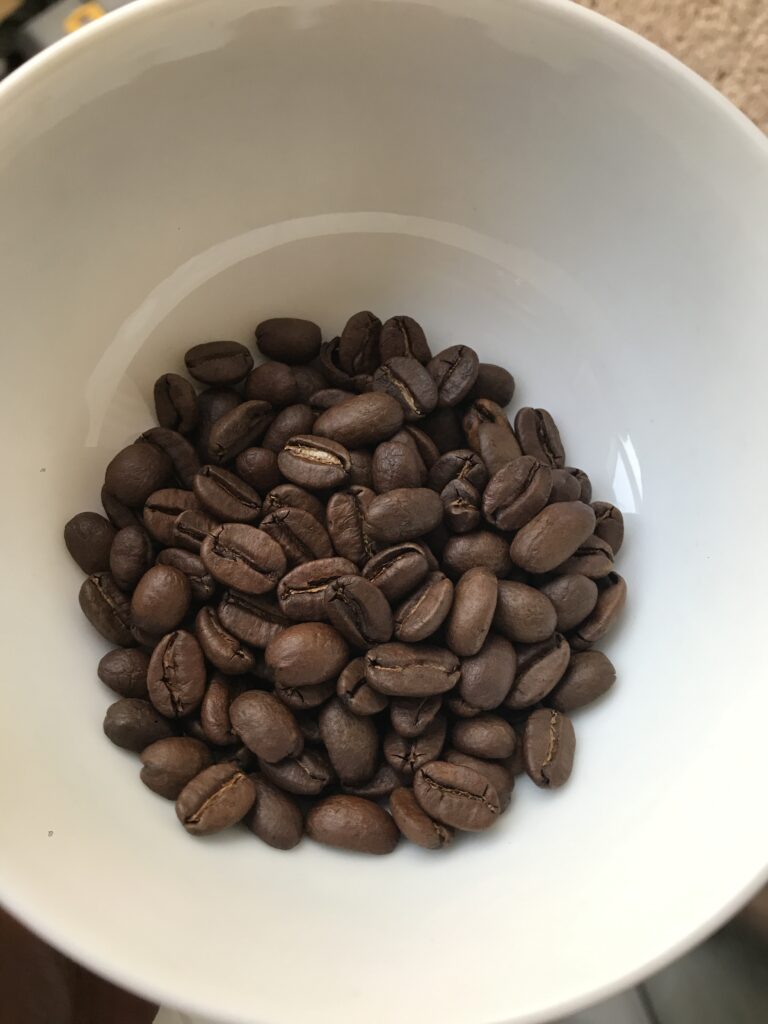
While dark roasts typically offer more caramelization, chocolate, and nutty flavors, sometimes a medium roast can taste more bitter than a dark roast. This variation is influenced by the type of coffee beans and the roasting process.
Specialty coffee isn’t necessarily better than blends
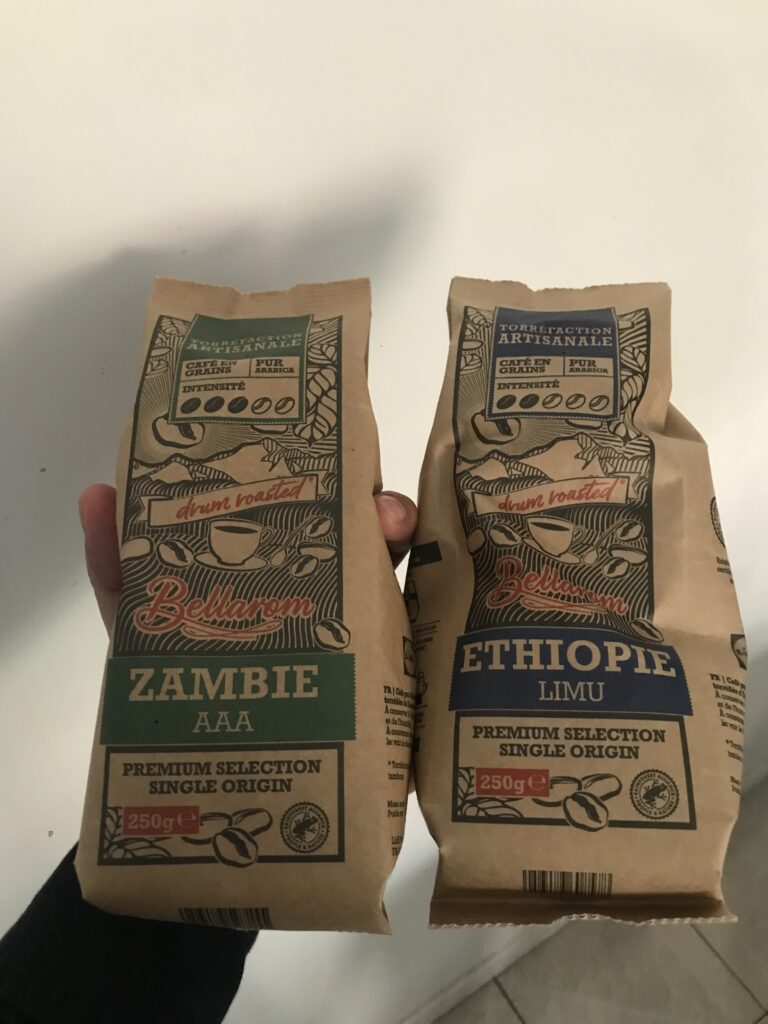
As mentioned earlier, I still believe that my first fresh bag of coffee tasted the best among all the coffees I’ve tried. Having a variety of coffee beans and tasting profiles definitely enhances the overall experience.
Specialty coffee is a niche market
I was very surprised to discover that specialty coffee is quite a niche market. I had anticipated it being as prominent as the wine market, with numerous reviews online. In reality, it’s challenging to find reviews of specialty coffee, at least here in France.
Each coffee may be suited to a specific brewing method
I believe that espresso enthusiasts generally expect a particular flavor profile, while those who prefer pour-over coffee might seek something different.
For instance, espresso drinkers may look for boldness with chocolate and nutty flavors, whereas pour-over coffee lovers might favor floral and fruity notes.
Correlation between price and quality
By visually inspecting the beans, you can clearly see a difference in quality related to their price. The coffee industry is notorious for underpaying its farmers, so when coffee is very cheap, it may indicate that someone along the supply chain has been inadequately compensated.
Making your own blend
If the theory sounds fun, the reality is quite different. I attempted a blend of 20% Peru, 60% Brazil, and 20% Zambia coffee, and the result was extremely unpleasant.
I’m not sure if the new induction stove I used with my Bialetti Venus played a role, but the outcome was honestly quite terrible.
Blending coffee is not easy; it demands real skill and knowledge.
Brewing technics are very important
Suppose you are making coffee with a Moka Pot; your technique must be precise for proper extraction and to bring out the coffee’s best aromas. If you over-extract using water that is too hot or extract for too long, your coffee will be unbalanced and taste like burnt wood.
Darker roasts makes me feel depressed but not medium roasts
This may be controversial, but I’ve noticed that even when using Nespresso Pods, darker roasts tend to leave me feeling somewhat down once the caffeine wears off and adenosine kicks back in.
It could be influenced by other factors, like adding milk or condensed sweet milk, but it’s still something worth mentioning.
Darker roasts with robusta dilute better with milk
In my experience, the slightly smoky flavor from dark roasts containing robusta beans creates a fascinating spicy note when combined with milk and sweetened condensed milk.
I can see why the Vietnamese are renowned for both their robusta beans and their exceptional iced coffee.
Play with grinding size to adjust the taste
For a Moka pot, the recommended grind size with the K6 is 60 clicks, while an espresso machine requires 40 clicks. Lowering the number of clicks results in a finer grind, leading to greater extraction and a more intense, flavorful coffee. Additionally, the flow becomes more restricted, remains steady, and extends over a longer duration getting into the different three phases of extraction and taste.
Darker roasts are easier to extract for an espresso
If you’re aiming for a flawless espresso shot—say, for a video—a darker roast will grind more easily and finely, creating a beautifully balanced extraction that performs a perfect dance in your bottomless porta filter.
Conclusion
In my opinion, if you want to get fresh and delicious roasted beans from your grocery store, it’s best to choose a popular blend or one you’re familiar with.
If you’re interested in trying specialty coffee, it’s worth spending the extra money to get it from a roaster or a coffee specialist online. You’ll receive fresher roasted beans, a higher-quality selection, and traceable origins.
In France, prices for specialty coffee are much higher—at least double. I just hope this price increase is justified by superior taste and fair compensation for the farmers.
In my opinion, it really depends on what you’re after; for a balanced Italian espresso-style cup, blends tend to work better.
Informations
Online store : https://www.maxicoffee.com
https://www.terresdecafe.com/fr
https://www.neonnight.fr/en/portfolio/personal-espresso


GIPHY App Key not set. Please check settings
One Comment